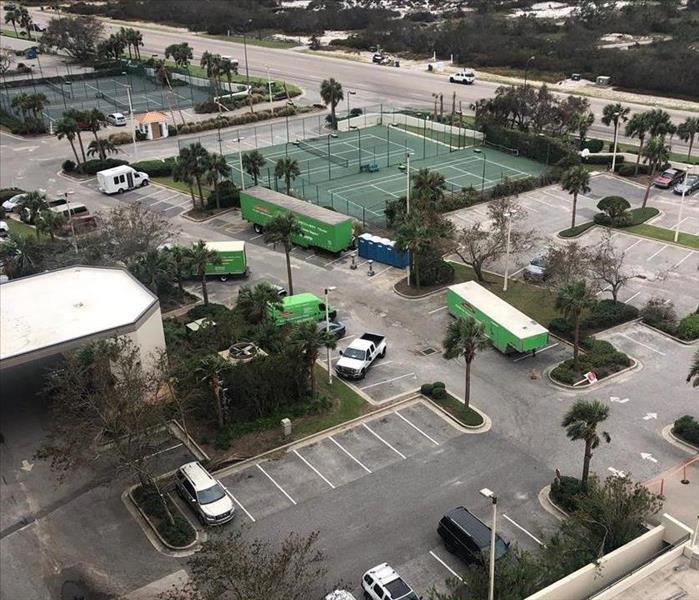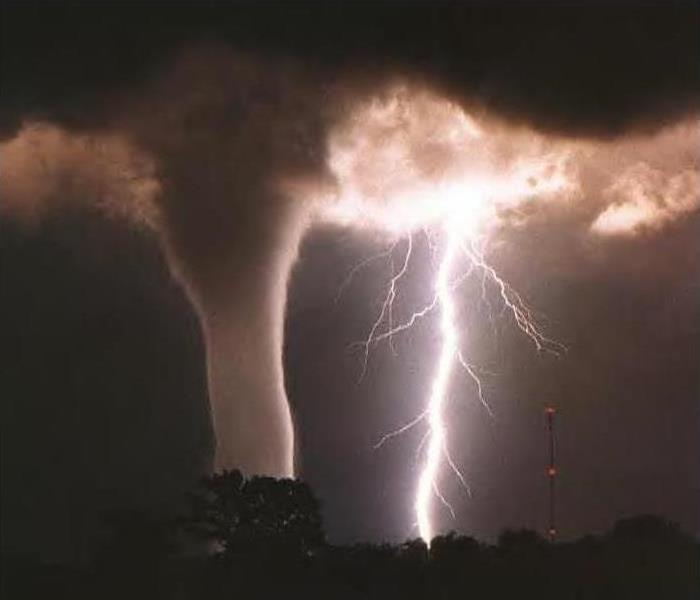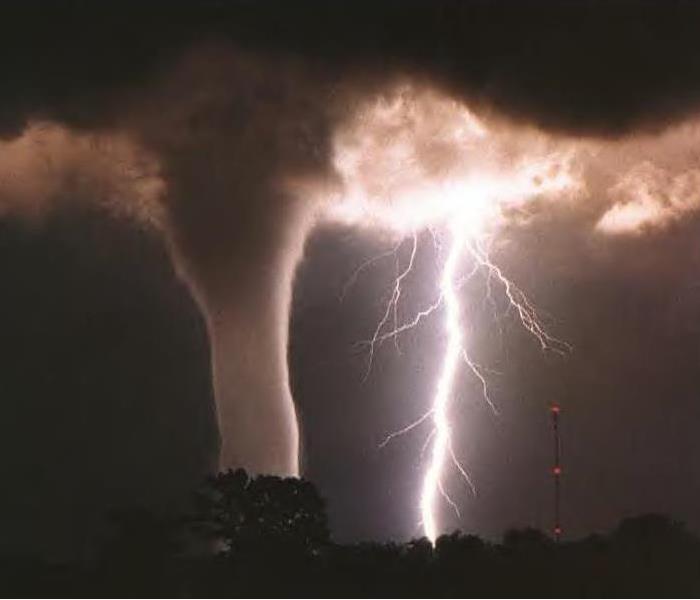Recent Storm Damage Posts
Hurricane Season 2022 and Florida's Hurricanes
11/20/2022 (Permalink)
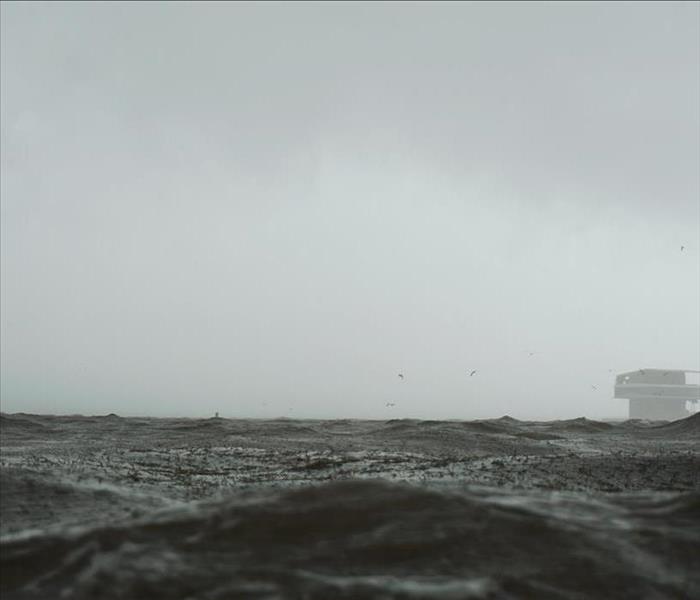 Strong storms, such as hurricanes, can form and make landfall in your area at any time during hurricane season, even as late as November.
Strong storms, such as hurricanes, can form and make landfall in your area at any time during hurricane season, even as late as November.
Florida was significantly impacted by the end of this year’s Atlantic hurricane season. In September and November, Hurricane Ian and Hurricane Nicole, respectively, made landfall in Florida. Because of our large loss abilities, SERVPRO Team Wall and our Disaster Recovery Team had the opportunity to assist Florida communities that were impacted by the storms. Hurricane Ian and Hurricane Nicole left sometimes intersecting paths of damage to residential and commercial properties because they made landfall in Florida within a relatively short time of each other. Continue reading to learn more about Florida’s 2022 hurricane season and how they fit into the grand scheme of the Atlantic hurricane season.
Florida's 2022 Hurricanes
Southwest Florida saw Hurricane Ian make landfall in mid-September. The result? A devastating number of casualties, many community members left without power, and significant damage to properties. A mere 43 days later, Hurricane Nicole made landfall, impacting many of the same Florida areas and sending first responders on search and rescue missions. Hurricanes Ian and Nicole, a seemingly bizarre double-whammy of hurricanes at the tail-end of hurricane season, might seem to be an anomaly. However, something similar happened 18 years ago. In 2004, Florida saw Hurricane Charley and Hurricane Jeanne make landfall, impacting practically the same areas of the state as Ian and Nicole. Yet another similarity is that the same amount of time lapsed in between hurricanes Charley and Jeanne as Ian and Nicole. With this information, it is important to consider what this might mean for property owners in Florida and across the country.
Call SERVPRO with Any Storm Emergency
Types of strong storms, such as hurricanes, can form and make landfall in your area at any time during hurricane season, even as late as November. Based on what we have seen in the case of Hurricane Nicole, a November hurricane is not necessarily a rare occurrence. Instead, a November hurricane – as well as hurricanes occurring in the latter part of the season – is a very real possibility for coastal states like Florida or anywhere on the east coast. SERVPRO Team Wall is here for you in the event of any storm emergency – large or small. For more information, call SERVPRO of Metro Pittsburgh East at (412) 672-5400 to speak with one of our team members about our professional Storm Damage Restoration services. We also offer storm damage restoration services tailored to commercial properties, perfect for commercial businesses. Information about our other storm-related offerings can also be found on our website. Check out our pages dedicated to our Large Loss Disaster Recovery Team, which aids communities following strong storm events such as hurricanes, as well as our residential and commercial Water Damage Restoration pages. Trust SERVPRO Team Wall to make it “Like it never even happened” after any storm emergency.
What You Should Know About Lightning
9/23/2022 (Permalink)
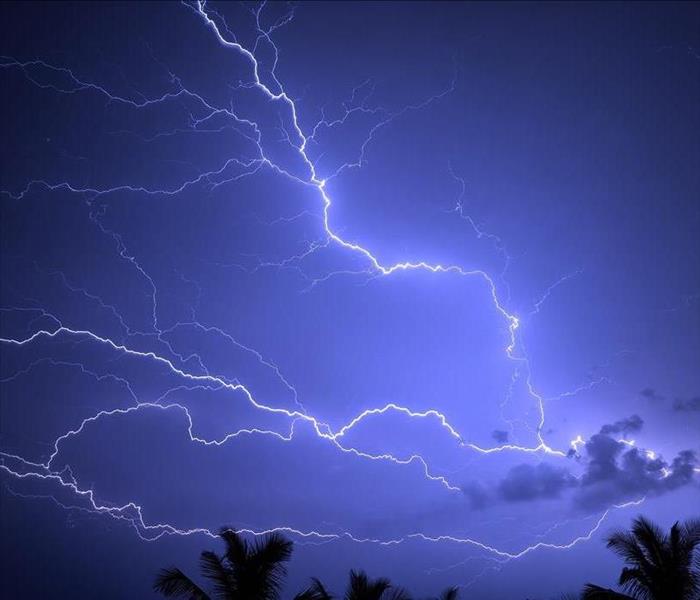 Learning more about these 3 common types of lightning you may see during a thunderstorm can help you best protect yourself and your property.
Learning more about these 3 common types of lightning you may see during a thunderstorm can help you best protect yourself and your property.
Most storms involve lightning, which can pose safety concerns as well as dangers to residential and commercial properties. Even hurricanes sometimes have lightning near the eye of the storm. There are 3 common types of lightning you may see during a thunderstorm and learning more about them can help you best protect yourself and your property. With information from NOAA’s “Lightning Types” article, today’s blog will discuss 3 common types of lightning that you may see in thunderstorms, as well as safety risks to properties associated with each type.
Cloud-to-Ground Lightning
The most dangerous type of lightning is cloud-to-ground lighting. This kind of lightning occurs when a channel of negative charge shoots down from a storm cloud and meets a positive charge emanating from tall objects like nearby trees, power lines, and tall structures like homes and commercial buildings. If the positive charge comes from a tall property, the unification of the positive and negative charges initiates the flow of an electrical current, which can pose safety risks to the property. Fires can ignite as a result of an electrical surge from a lightning strike. Equipping your property with surge protectors can help prevent damage to your property if lightning strikes. Additionally, if you know that there are thunderstorms in your area, even if you don’t see any lightning nearby, refraining from using electrical appliances and doing activities involving water, like taking a shower or bath, are good rules of thumb in order to protect the people living or working in your residential or commercial property during a thunderstorm.
Cloud Flashes
Sometimes, lightning during a thunderstorm does not reach the ground. Instead of seeing lightning bolts, you might just see flashes of light in the clouds. This phenomenon is known as cloud flashes, in which lightning remains in the clouds through what NOAA calls intra-cloud lightning flashes, and it occurs when an “electrical discharge between oppositely charged areas within the thunderstorm cloud,” according to The National Weather Service. While cloud flashes may not seem as dangerous, cloud flashes still pose safety threats, as they indicate that the storm is producing electrical charges.
Heat Lightning
You may be surprised to learn that there is actually no such thing as heat lightning. What we perceive as heat lightning is actually the lightning flashes from a distant storm that is far enough away from us that we can’t see the storm’s lightning bolts or hear its thunder. We mention heat lightning in this blog because an accurate understanding of what we know as heat lightning reveals that a potentially dangerous storm producing lightning is in the area.
Experience Lightning Damage? Call SERVPRO
Know that SERVPRO Team Wall has your back in the event that lightning from a storm causes damage to your property. We are committed to making it “Like it never even happened” after any storm. Trust SERVPRO’s experienced storm damage restoration specialists, equipment, and methods to restore your property to its preloss condition. Speak to one of our SERVPRO Team Wall team members by calling SERVPRO of Metro Pittsburgh East at (412) 672-5400. On our website, you can find more information about our Storm Damage Restoration capabilities, including storm restoration services tailored specifically to commercial properties, our Disaster Recovery Team for large losses, and our water restoration process.
Hurricanes in September: What to Know About Peak Hurricane Season
9/16/2022 (Permalink)
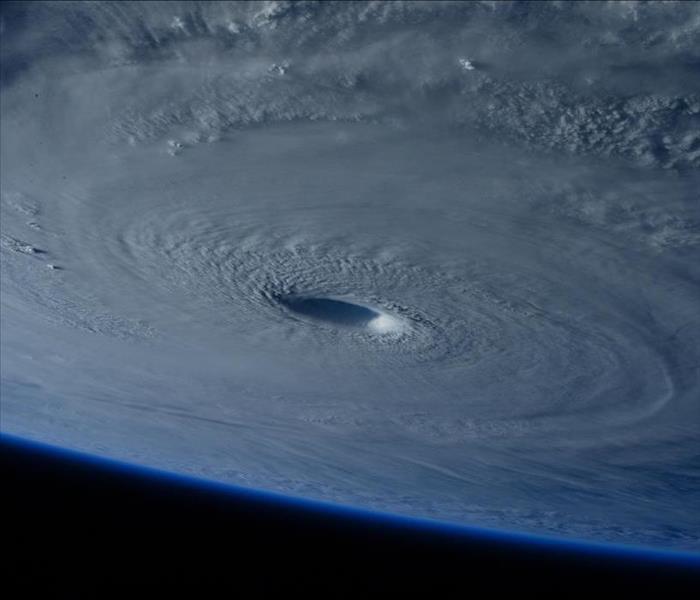 It is imperative that property owners continue taking proactive actions as we head into the last part of hurricane season.
It is imperative that property owners continue taking proactive actions as we head into the last part of hurricane season.
Last week, an article posted on weather.com declared September the “annual peak of Atlantic hurricane season.” The author, who serves as a senior meteorologist at weather.com, shares data and analysis supporting that September 10th of this year marked the statistical, climatological peak of hurricane season. During this time, “the Atlantic Basin has had the most hurricanes and named storms over the course of history,” according to the author. NOAA explains that the northern hemisphere’s hurricane season began on June 1st this year and will end November 30th. September 10th is not the exact middle of hurricane season. As a result, we might ask: what constitutes September as peak hurricane season? Today’s blog will answer this question and also share a few ways in which property owners can protect their homes and businesses during this peak period, as well as the remainder of hurricane season.
What Makes September Peak Hurricane Season?
Several factors, according to the weather.com article, increase the likelihood of hurricanes forming in the Atlantic region during the month of September. The article lists “ocean water reaching its highest temperature, the atmosphere's ability to generate thunderstorms hitting its peak, and hostile shearing winds declining to a minimum,” as well as “tropical waves,” which peak in July and carry into September, among these factors. In the article, the author also incorporates statistical data that highlights the peak of hurricanes on or around September 10th of this year. The data additionally shows that 77% of named storms and 87% of hurricanes in an average hurricane season occur in the last 3 months of the season: August, September, and October. We can deduce from this information that, although we are currently in the most active portion of hurricane season, the heightened risk for hurricanes stretches well into the remainder of September and October. This means that it is imperative that residential and commercial property owners continue taking proactive actions in order to protect their properties from increased potential storm activity as we head into the last part of hurricane season.
Hurricane Preparedness
Property owners should prepare for two primary things before a hurricane- wind and flooding- according to the American Red Cross. Two ways to prevent wind damage are cutting back trees and bushes close to your property and securing windows with storm shutters. In order to prevent flooding, be sure that your property’s gutters and drains are cleared before the storm, as this will allow storm water to drain easier. Even with our best, proactive, and preventative efforts, it is important to remember that hurricanes are unpredictable, powerful forces of nature that can cause unanticipated property damage. If your residential or commercial property experiences storm damage in the aftermath of a hurricane this season, know that SERVPRO Team Wall is here for you. Talk to one of our team members at the first sign of damage by picking up the phone and calling SERVPRO of Metro Pittsburgh East at (412) 672-5400. Additionally, you can visit our website for more information about our professional Storm Damage Restoration services, Commercial Storm Damage Restoration, and our experienced Disaster Recovery/Large Loss Team. You can find peace in knowing that SERVPRO will make it “Like it never even happened”for your residential or commercial property.
Hurricane Season: What To Know Now
8/4/2022 (Permalink)
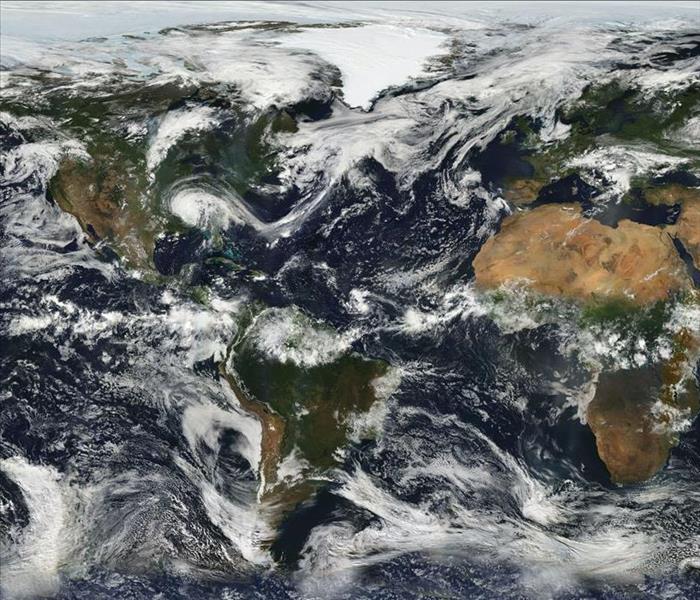 There is still time for things to ramp up, producing dangerous conditions that could pose safety risks to your property.
There is still time for things to ramp up, producing dangerous conditions that could pose safety risks to your property.
With its official start date of June 1st, hurricane season 2022 for the Atlantic Ocean in the Northern Hemisphere is well underway. Earlier this year, NOAA predicted that this year’s hurricane season would be abnormally active. If you don’t remember worrying about any hurricanes this summer, you’re not having a lapse in memory. An article published by The Washington Post earlier this week stated that this is the first year since 2017 that the Atlantic Ocean hasn’t seen the development of a hurricane before August 1st. With this information, you may be wondering whether hurricane preparation efforts for your residential or commercial property are worth the time and effort. The short answer: yes. Keep reading to learn why hurricane preparation is still imperative.
There Is Still Time
It is true that 2 months of hurricane season are behind us, but there are still 3 months of hurricane season left after August. Two of those months- August and September- are peak months for hurricane activity. Even though June and July saw low levels of hurricane activity, there is still time for things to ramp up, producing dangerous conditions that could pose safety risks to your property. Therefore, property owners must continue preparing for the possibility of hurricanes through November 30th, which is when the formal conclusion of hurricane season.
Hurricane Preparedness Tips
Considering the threat of hurricane activity through the end of November, we would like to share two of our top hurricane tips with you in today’s blog. The following are preventative measures that you can take well in advance of a hurricane, which can protect your property and those occupying it in the long-run:
- Check your roof and gutters for damage when the weather is nice. You know what they say, “out of sight, out of mind.” Our roof and gutters are not things that we see up close and personal on a regular basis. Therefore, damage can sometimes go unnoticed. Clogged gutters and loose shingles can create larger problems when combined with the power of a strong storm. To protect your property from additional, unnecessary damage in the event of a storm, take a peek at your roof and gutters when it is safe to do so.
- Create a hurricane preparedness kit. You can find great peace of mind by ensuring that those occupying your property have what they need in the event of a storm emergency. Putting together a hurricane prep kit is an excellent way to store all of your necessities so that you have access to them whenever disaster strikes. Find instructions and ideas for assembling a hurricane preparation kit in Ready.gov’s “Build A Kit” guide.
There is no way of knowing for certain how a hurricane or any strong storm will impact your property. SERVPRO Team Wall is always “ready for whatever happens,” so you can trust us to have your back. We are famous for making it “Like it never even happened” because of our robust storm damage restoration service offerings and our tight-knit, experienced team of restoration professionals. Learn more about our residential and commercial storm damage restoration services on our website, alongside information concerning our water restoration process and the ways in which we care for your belongings following a storm emergency. For more information about what SERVPRO Team Wall can do for you and your property, give us a call at (412) 672-5400.
Indoor Lightning Safety for Homeowners
6/17/2022 (Permalink)
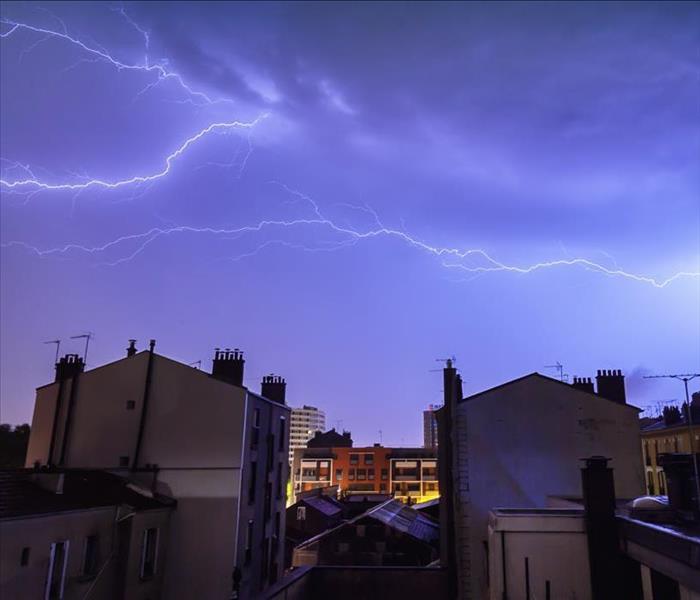 Once you find shelter inside, did you know that there are additional lightning safety guidelines for indoors?
Once you find shelter inside, did you know that there are additional lightning safety guidelines for indoors?
Almost one-third of injuries sustained from lightning strikes, according to The Centers for Disease Control, occur inside homes. Outdoor lightning safety is something with which we’re likely all familiar; we know to get out of the pool or ocean when we hear a rumble of thunder and to seek shelter indoors immediately. But once you find shelter inside, did you know that there are additional lightning safety guidelines for indoors? Although lightning is dangerous any time of the year, because lightning occurs most frequently during the summer, discussing lightning safety this time of year is especially relevant. Therefore, now is a good time to get familiar with indoor lightning safety in order to protect your home, as well as those living in it, from the safety risks of storms.
If lightning strikes a residential structure, it can make for a serious fire hazard. “Each spark of lightning,” as explained by Weather.gov, “can reach over five miles in length, soar to temperatures of approximately 50,000 degrees Fahrenheit, and contain 100 million electrical volts.” Knowing this, it is evident that lightning is powerful enough to ignite dangerous fires in residential structures, as the electrical currents sent through homes that result from lightning can pose safety hazards to those living in the home. For additional lightning safety tips that can be practiced in your home during a storm, continue reading.
Keep Your Distance from Electrical Equipment
Since we know that lightning can contain 100 million electrical volts, we can deduce that your home and those living in it can be protected from lightning safety hazards by refraining from using electrical equipment during a thunderstorm. If electronics are used during a storm, they can facilitate electrical shock or fire. It is important to understand that lightning also travels through electrical currents, such as those used by radios and televisions, so corded landlines and other devices that are plugged in should not be used during thunderstorms. Instead, grab a battery-powered radio or your smartphone to stay on top of forecast updates. To protect your electrical devices during a storm, consider purchasing surge protectors for your home.
Avoid Plumbing and Water
Most of us can think of a time when the lifeguard has called us in from the ocean or whistled us out of the pool due to thunder from an approaching storm. It is important to get out of the water during a storm, but it is recommended to also avoid water indoors during a storm. Activities that use water, including taking a bath, showering, and even washing the dishes,are dangerous during a thunderstorm, since lightning can travel through a property’s plumbing. It is safest, therefore, to hold off on these activities until the storm passes.
Shelter in the Safest Area Possible
We all know to seek shelter indoors during a storm. However, where in the home you shelter is also important. Be sure to avoid screened-in porches and rooms with windows or doors. Instead, seek shelter in an interior room of the home and, because lightning can travel through concrete walls and flooring, keep your distance from concrete floors and walls.
Storm Damage Takes You By Surprise? Call SERVPRO
By taking the preventative measures outlined in this blog, you can help protect your home and those living in it from the safety hazards caused by lightning. Still, your home may endure storm damage because storms are unpredictable, powerful, and often dangerous. If your home experiences unexpected storm damage, remember that SERVPRO Team Wall is only a call away. To learn more about our various Storm Damage Restoration services and the SERVPRO Disaster Recovery Team, check out our website or speak with one of our knowledgeable team members by giving us a call at (717) 510-6779 at the first sign of storm damage. SERVPRO of Metro Pittsburgh East is here to help make it “Like it never even happened” for your home after any disaster.
Summer Thunderstorms 101
6/3/2022 (Permalink)
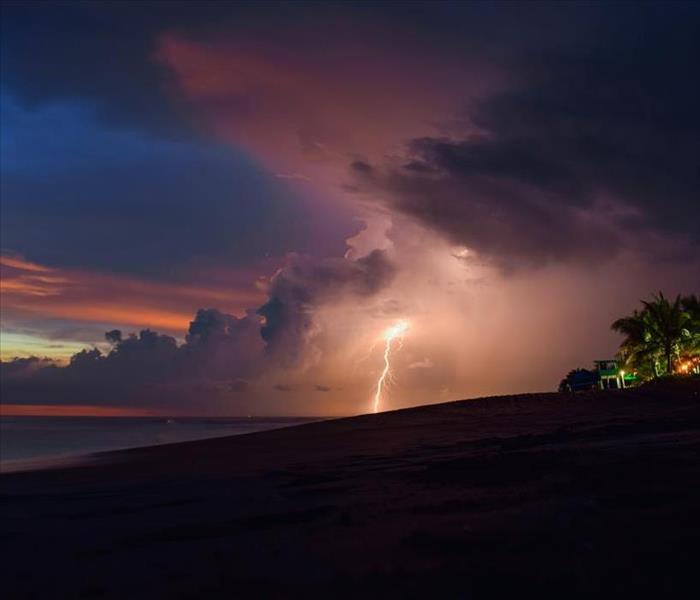 While we see a general increase in the number of thunderstorms during the summer months, there is variation in the severity of such storms.
While we see a general increase in the number of thunderstorms during the summer months, there is variation in the severity of such storms.
Due to atmospheric conditions, we see an increased number of thunderstorms during the summer months. There is, however, variation in the severity of summer thunderstorms. In today’s blog, using information compiled by NOAA's National Severe Storms Laboratory, we will break down different types of thunderstorms you may see during the summer so that you can better understand what effects they can have on your residential or commercial property. For an overview of summer thunderstorm classifications and the ways in which SERVPRO Disaster Recovery Team - Team Wall can help should any storm damage be inflicted upon your home or commercial property in the aftermath of a storm, read on.
Single-Cell Thunderstorm
Encountering a single-cell thunderstorm, especially on a hot summer afternoon, is fairly common. Usually short and weak in nature, single-cell thunderstorms typically conclude within an hour. While they may be short-lived, single-cell thunderstorms can still be powerful, as they produce lightning and heavy rain.
Multi-Cell Thunderstorms
In comparison, multi-cell thunderstorms last significantly longer than single-cell thunderstorms. They are also considerably stronger, producing heavier rain, flooding, hail, strong winds, and even tornadoes.
Squall Line
Differing from thunderstorm cells, squall lines are composed of a line of thunderstorms, occurring one after the other. Squall lines, like multi-cell thunderstorms, produce high winds and heavy rain, but they generally pass over areas in a shorter amount of time and are less likely to initiate tornadoes. A “super squall” is also possible, which increases the duration of the storm event.
Derecho
One rare type of summer thunderstorm is a derecho. This weather event is a prolonged and strong storm, which features fast-moving thunderstorms and downpours, as well as forceful winds. A derecho usually leaves a path of damage in its wake that resembles that of a tornado. While a derecho is a severe weather event with potential for inflicting serious damage, remember that they are rare.
Have Storm Damage? SERVPRO Can Help
If your residential or commercial property experiences storm damage this summer, know that SERVPRO Disaster Recovery Team - Team Wall is always standing by, ready to help restore your home or business to its preloss condition. To make it “Like it never even happened” for property owners, our highly-skilled and trained storm damage restoration professionals, in combination with our advanced technologies, provide customers with top-quality Storm Damage Restoration services. In the event of an emergency, you can find additional resources, such as our Water and Storm Damage Tips, on our SERVPRO of Metro Pittsburgh East website, while waiting for help to arrive. On our website, you can also find additional information about our Disaster Recovery Team, SERVPRO’s large network of teams across the country, which serves as a tool that allows us to compile resources in the event of commercial large-loss storm events. Give us a call at (412) 672-5400 for more information about how SERVPRO of Metro Pittsburgh East can restore your property after any emergency.
Spring Thunderstorm Preparation
3/17/2022 (Permalink)
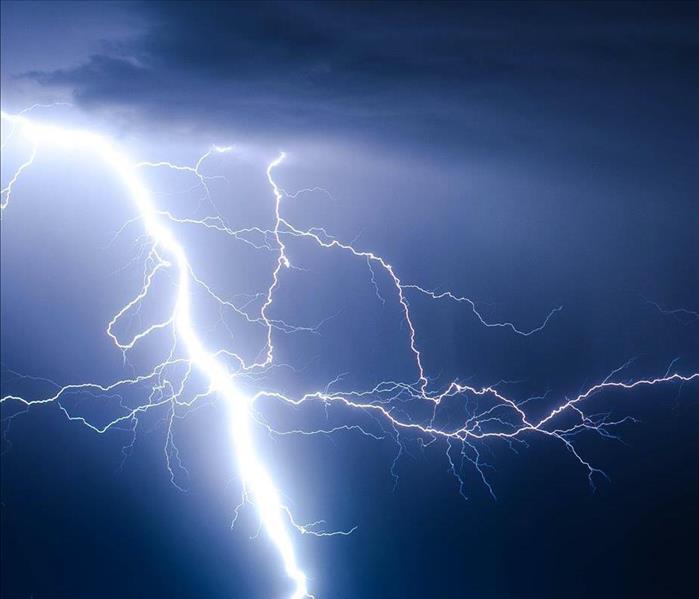 The American Red Cross reports that lightning causes more deaths than tornadoes and hurricanes.
The American Red Cross reports that lightning causes more deaths than tornadoes and hurricanes.
While thunderstorms can vary in length and severity, every storm has the capability of leaving a path of destruction, which can present safety risks to homes and businesses. Examples of the dangerous consequences of thunderstorms include downpours, hail, high winds, flash flooding, and downed trees and powerlines. The American Red Cross reports that lightning causes more deaths than tornadoes and hurricanes. With all this said, thunderstorm preparation is imperative in order to make sure that your residential property is ready for anything this spring. Continue reading to learn more about the steps that you can take to prevent storm damage from thunderstorms:
3 Thunderstorm Safety Tips
If you check out the Red Cross’ website, you’ll find full lists of safety tips for before, during, and after thunderstorms. In this blog, we’d like to highlight three of their tips that can help prevent storm damage. Firstly, because objects outside can be raised off of the ground by strong winds and function as projectiles, it is beneficial to devise a list of outdoor objects that can be brought inside before a thunderstorm. In order to protect your home from flying debris, make sure that your property’s doors and windows are sealed shut before the storm. Installing storm shutters over windows can also be helpful in avoiding unwanted damage. The final tip is to make an attempt to cut back tree branches and shrubbery before thunderstorms roll through your area this spring. Doing so can prevent branches from falling and coming into contact with your residence.
Call SERVPRO for Expert Storm Damage Restoration
The three aforementioned tips from the Red Cross can decrease your chances of experiencing storm damage this spring, but there is always a risk with every storm. Weather events are out of our control but, all the while, you can always rely on SERVPRO Disaster Recovery Team - Team Wall to be there if the unthinkable happens. No matter where your property is located or how extensive the damage may be- we can handle it all. Trust our professional 24-Hour Emergency services to provide you with the quickest solution possible and make it “Like it never even happened.” You can also find more information about our many services, like our residential Storm Damage Restoration and Commercial Storm Damage Restoration, and the larger SERVPRO Disaster Recovery Team by visiting our website.
Snowmelt Flooding May Lead to Water Damage
2/4/2022 (Permalink)
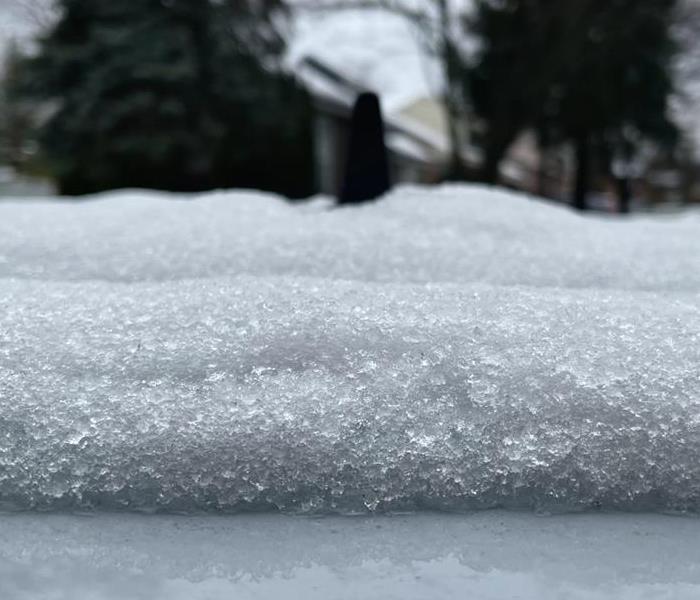 When snow melts, there is a risk of flooding that may impact homes and businesses alike.
When snow melts, there is a risk of flooding that may impact homes and businesses alike.
Already, this winter season has dumped snow on the Pittsburgh area and it is likely that, before spring, there will be more snowfall. When snow melts, there is a risk of flooding that may impact homes and businesses alike. Because floods and their resulting water damage can be costly, leaving serious consequences to your property, including mold growth and structural issues, taking steps to prevent snowmelt flooding from impacting your home or business. This blog aims to discuss the causes and effects of flooding from snowmelt while sharing preventative measures that you can take against water damage from snowmelt flooding this winter.
What is a Snowmelt Flood?
When water from melted snow makes up the majority of flood water, a flood, according to Weather.gov, is a snowmelt flood. Their Flooding Factsheet illuminates the difference between the speed of rain water’s absorption into the ground versus that of snow, communicating that water from snow takes longer to absorb into the ground because it first requires melting. When water cannot be absorbed into the ground, moisture pools above the soil, becoming runoff that eventually leads to flooding. Usually, highly saturated soil due to frozen ground or a heavy, previous rain or snow storm increases the likelihood of runoff forming and flooding. Every year in the United States, according to Weather.gov, snowmelt flooding occurs. Additionally, eight of the most dangerous floods that took place during the 20th century were snowmelt floods, which supports the destructive nature of such floods.
How Should You Prepare?
There are several steps that you can take to protect your home or business from significant water damage due to snowmelt flooding. First, move snow away at least 4-6 ft away from the area surrounding your property and remove snow from the roof if it is safe to do so. Indoors, your home or business’ valuable items can be better protected by storing them in water-tight containers or moving them to areas of higher elevation. Be sure to keep valuable items above the basement or the ground floor of your property. Above all, be sure to develop an emergency plan that can be implemented in the event that your property experiences water damage. Calling SERVPRO Disaster Recovery Team - Team Wall can be the first step in initiating an emergency plan.
Experiencing Snowmelt Flooding? Call SERVPRO
Flooding emergencies are never easy for homeowners and business owners. One easy and stress-relieving step, however, is calling SERVPRO Disaster Recovery Team - Team Wall’s SERVPRO of Metro Pittsburgh East office at (412) 672-5400. Our SERVPRO Team Wall crew members are expert water damage restoration professionals with years of experience, who offer 24-Hour Emergency Service to thoroughly restore your property. Check out our website for more information about our Water Damage Restoration Services specific to both residential and commercial properties in addition to our reliable Water Damage Restoration Process that will take care of your property and make sure that your belongings receive the care that they deserve.
Thundersnow: What Is It?
1/7/2022 (Permalink)
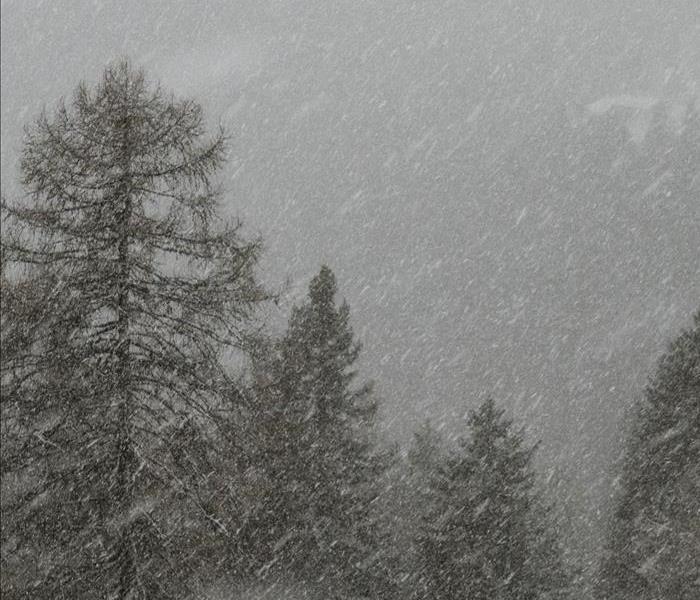 Thundersnow poses an increased safety risk, combining the consequences of snow accumulation and the dangers of thunderstorms' thunder and lightning.
Thundersnow poses an increased safety risk, combining the consequences of snow accumulation and the dangers of thunderstorms' thunder and lightning.
Maybe you’ve heard of the epic weather event that is “thundersnow.” If you haven’t, get ready to learn about the bizarre winter weather event that combines a thunderstorm and a snowstorm in today’s blog. Continue reading to learn the answers to such questions as: “What is thundersnow?”; “When and why does it happen?”; and “What should I do to keep my property safe during a thundersnow event?”
What Is Thundersnow?
In essence, thundersnow is the winter equivalent of a thunderstorm, as the Farmer’s Almanac explains thundersnow to be the result of warm and cool atmospheric temperatures colliding. As opposed to thunderstorms with rain as the primary form of precipitation, thundersnow instead combines snow with lightning and thunder. The type of atmospheric collision required for thunderstorms and thundersnow is more likely to occur during the spring and summer due to warmer temperatures, but fronts carrying extremely cold temperatures, like Nor’easters on the East Coast, can approach warmer cold fronts during the winter, which can result in prime conditions for thundersnow. Just last week, thundersnow made an appearance in Maryland, which goes to show that these events happen more often than you might think.
Thundersnow Safety
Thundersnow events pose an increased safety risk, as they threaten the consequences of the snow accumulation characteristic of snowstorms alongside the usual dangers of thunder and lightning from thunderstorms. As a result, keeping your home or business as safe as possible during a thundersnow event requires additional attention. You may experience heavy snow accumulation or lose power as a result of strong winds and lightning. Just as you would during a thunderstorm, do not go outside during a thundersnow event unless absolutely necessary. Thundersnow events, because they are so uncommon, usually come as a surprise when they do happen. Keep an eye on the forecast and watch out for lightning and sounds of thunder during snowstorms in the event that thundersnow occurs.
Trust SERVPRO’s Storm Damage Restoration Services
No matter what type of storm your property experiences, from a thunderstorm to a blizzard to thundersnow, SERVPRO Disaster Recovery Team - Team Wall has you covered. Our renowned Storm Damage Restoration and Commercial Storm Damage Restoration services, as well as our advanced technologies and access to SERVPRO’s nationwide network of Disaster Recovery Teams, will ensure that your property receives the restoration services and care that it needs after any emergency. At the first sign of damage, pick up the phone and call SERVPRO of Metro Pittsburgh East at (412) 672-5400 to speak with one of our knowledgeable team members and enlist the help of our 24 Hour Emergency Service, which will help make your home or commercial business’ storm damage “Like it never even happened,” year-round.
Snow Squalls: A Winter Safety Concern
11/12/2021 (Permalink)
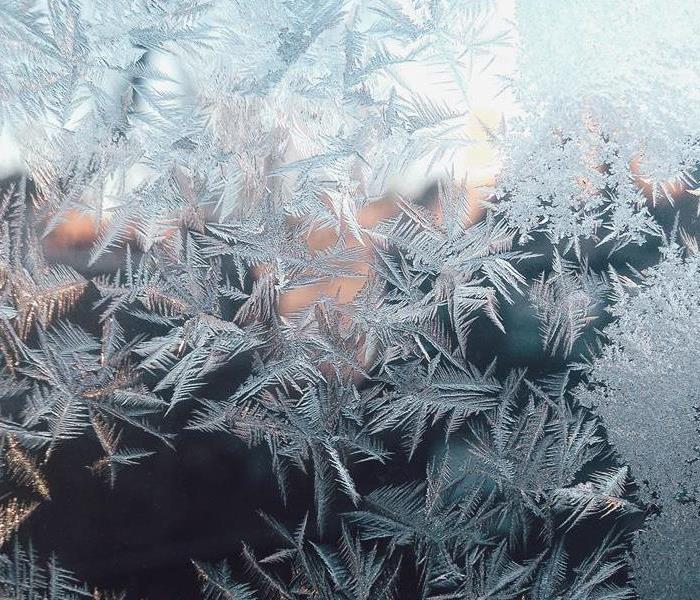 Picking up the pieces in the aftermath of a winter storm event can be stressful, which is why it’s important to remember that we have your back.
Picking up the pieces in the aftermath of a winter storm event can be stressful, which is why it’s important to remember that we have your back.
The probability that you have heard the term “snow squall” in a weather report or forecast is likely, but how many of us thoroughly understand what, precisely, a snow squall is? Snow squalls are severe winter weather events that can create safety concerns. Therefore, we will explain what happens during a snow squall and discuss ways in which you can stay safe this winter.
What Is a Snow Squall?
An “intense short-lived burst of heavy snow” lasting anywhere from just a couple minutes to half an hour is how the National Weather Service defines a snow squall. Their gusty winds also reduce visibility, creating a major concern for drivers on the road. Additionally, you may experience one long snow squall or multiple snow squalls back to back. These weather events are also not limited to daytime, so nighttime snow squalls can occur and, when they do, they can be even more dangerous, as visibility is already limited in darkness. Snow squalls may sound intimidating, but it is important to acknowledge that they are rare events.
Hazardous Driving Conditions
In the event that a snow squall appears in the forecast, drivers should take precautions, as such storms can create hazardous conditions for driving. Because snow squalls are short bursts, snow accumulation on the ground may not be overwhelming, but roads can quickly freeze and become slick. Instead, snowfall, which may be intense and sudden, would be a greater threat. Snow squalls can create blizzard-like conditions, but are sustained only for a fraction of the time.
Staying Safe During a Snow Squall
When driving during the winter, be sure to check the forecast before hitting the road and if winter weather is predicted, it may be beneficial to stay tuned to the radio in case conditions suddenly worsen. In the event that conditions worsen while you are driving, you can prevent an accident by pulling over when it is safe and waiting it out. When driving in the snow, drive slowly, avoid slamming on your brakes, and keep your headlights on to increase visibility.
SERVPRO Offers Professional Storm Damage Restoration Services
Picking up the pieces in the aftermath of a winter storm event can be stressful, which is why it’s important to remember that SERVPRO of Metro Pittsburgh East has your back. Call us at (412) 672-5400 at the first sign of damage. Here at SERVPRO Disaster Recovery Team - Team Wall, we are equipped with advanced equipment and our storm damage restoration professionals are knowledgeable and experienced. To learn more about the year-round, specific storm damage restoration services that we offer, visit our website and check out our commercial storm damage services, designed specifically for commercial properties. We’re standing by, ready to make it “Like it never even happened,” for your property after any type of storm damage any time of year.
Our Top Generator Safety Tips During Storms
9/30/2021 (Permalink)
 Our generator usage is generally limited. As a result, our knowledge about generator safety is often lacking.
Our generator usage is generally limited. As a result, our knowledge about generator safety is often lacking.
When a storm rolls through your neighborhood and knocks out the power, we often turn to generators to restore a sense of normalcy in our lives. By restoring electricity, generators can charge our phones, keep our refrigerators cold, and give us light. Thankfully, power outages are not a common occurrence and that means that our generator usage is generally limited. As a result, our knowledge about generator safety is often lacking. Generator usage can increase the risk for safety hazards such as fires and carbon monoxide poisoning, according to Consumer Reports. In order to protect your home or business from such concerns, understanding general generator safety is crucial. A great way to start is by taking our top generator safety tips into account, which will be outlined in this blog.
- Keep Your Generator Outside
When your generator is stored indoors or in any enclosed space, such as garages and basements, you run the risk of carbon monoxide poisoning. It is beneficial, according to the American Red Cross, for generators to be stored outdoors and a safe distance away from potential entrances to your home or business, like windows and doors. Inside, you can further protect your property by installing a system that will alarm inhabitants of potential danger, which can be fulfilled with a carbon monoxide detector. In this way, you will know immediately if a risk for carbon monoxide exposure emerges.
- Store Fuel in a Safe Location
The location of your generator’s fuel supply is also an important component of generator safety to consider. Generator fuel is flammable and can become a fire hazard if it is stored near items that can instigate fire. Be sure to keep fuel located in a well-ventilated, cool, and dry space that is a safe distance away from living areas.
- Consider Installing a Transfer Switch
When it comes to reducing your home or business’ risk of an electrical fire as a result of generator usage, it may be beneficial to install a transfer switch. When you plug your generator into an extension cord is a known fire hazard and if you opt to plug your generator directly into a wall outlet, a practice known as “backfeeding,” you put yourself and others at risk for electrocution. Both of these dangerous situations can be avoided with the help of a transfer switch, a device that permits your generator to be plugged into your property’s circuit panel. A transfer switch, which may display the generator’s wattage usage levels, can reduce the risk for fire and prevent overloading in your home or business.
SERVPRO Is Standing By
While generators can restore a sense of normalcy to your life during a power outage, caution should be at the forefront of your mind in the event that you use one to power your home or business. Having an emergency plan can make a world of difference when it comes to protecting your property and minimizing damage. Calling SERVPRO of Metro Pittsburgh East at (412) 672-5400 should be your first step in the event that an emergency occurs. Our team of highly-trained, residential and commercial damage restoration professionals are standing by, ready to respond to your property’s fire damage emergency resulting from generator usage. Visit our website to read more about the Fire Damage Restoration, Commercial Fire Damage Restoration, Storm Damage Restoration, and Commercial Storm Damage Restoration services that we offer. No matter the size or scope of your emergency, know that SERVPRO is always just one call away, prepared to restore your property to its preloss condition.
How To Prevent A Sump Pump Failure
8/5/2021 (Permalink)
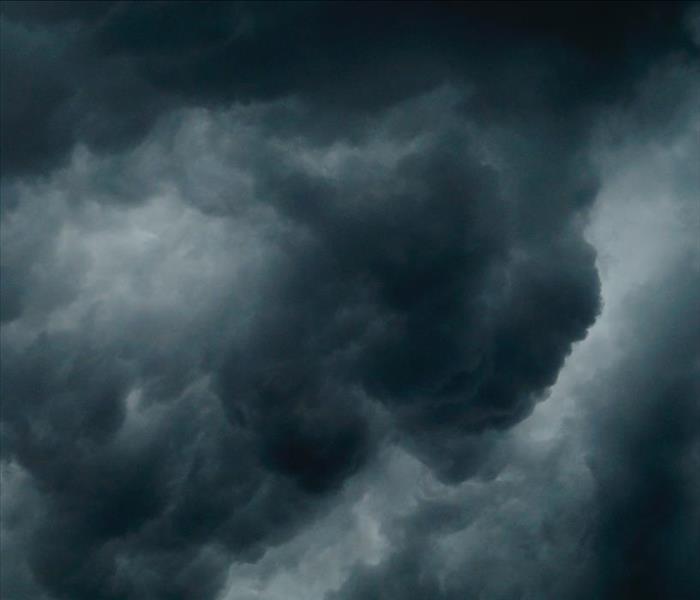 Sump pumps protect buildings from the harmful effects of flooding and water damage from storms.
Sump pumps protect buildings from the harmful effects of flooding and water damage from storms.
Sump pumps, drainage systems often employed in the basements of commercial buildings, protect buildings from the harmful effects of flooding and water damage from storms by pumping water out of the basement. The failure of a building’s sump pump can be catastrophic, threatening the safety of a commercial building’s important documents, objects, and furniture. Your commercial business can take actions to prevent your building from suffering a sump pump failure by understanding various reasons as to why sump pumps might fail in the first place.
Causes
Infrequent Maintenance
Your risk of a sump pump failure is heightened when your unit isn’t undergoing maintenance on a regular basis. Make sure to regularly check that your sump pump’s vents are working properly and consider running a vinegar solution through the unit for cleaning in order to keep things running smoothly.
Old Age
It is also important to think about the age of your sump pump. Because sump pumps endure their fair share of wear and tear over the years, it is not uncommon for sump pumps to fail after 7-10 years. You can prevent a disastrous failure by keeping a closer eye on your sump pump as it nears this age range and consider replacing the unit if it begins to malfunction.
Power Outage
Sump pumps are also at a greater risk for failure during hurricane season and the summer months due to turbulent summer storms. Storms can serve as a double-whammy for sump pumps, as they often bring large amounts of rain and occasionally, power outages. Without electricity, sump pumps will not be able to complete their job of pumping rainwater away from the building. Hooking your business’ sump pump up to a backup generator can help your sump pump continue to run smoothly and avoid a failure during a storm.
Sump Pump Failure? Call SERVPRO
Sump pump failures can be overwhelming, but it’s important to remember that SERVPRO and our team of commercial water damage experts have your back. We are experienced in sump pump failures and will tailor our water damage restoration services to your business’ specific needs. For more information about our commercial water damage services, click here. To schedule your consultation, call SERVPRO of Metro Pittsburgh East today at (412) 672-5400 today.
When Summer Storms Strike: Lightning Safety
6/9/2021 (Permalink)
Not a year goes by that we don’t come face-to-face with at least one forceful, severe summer storm. Storms in the summer months can take the form of short rain showers, severe squalls, and everything in between. Regardless of the type of storm that hits your area this summer, it is critical to understand the severity of damage that storms can bring to homes as well as commercial buildings. Because our goal here at SERVPRO of Metro Pittsburgh East is to help our customers be prepared for severe weather such as summer storms, we like to compose blogs dealing with storm topics such as flash flooding and hurricane preparation every summer. In this blog, we want to focus on lightning safety and the dangers of lightning, which are often overlooked. Lightning presents a wide range of risks to buildings, including fire damage, considerable structural damage, and electrical surges. For more information about the repercussions of lightning strikes and a plan detailing what to do in the event that lightning strikes your home or business, be sure to continue reading.
Types of Lightning Damage
When lightning strikes, homes and businesses become vulnerable to not just fire damage, but structural damage and devastation to personal belongings as well. Fires that ignite as a result of a lightning strike most frequently occur in the top floors or attics of buildings, as those areas are the closest to the roof. These fires can then spread to other areas of the home or business when the electrical current from a lightning strike travels through electrical wires. In the wake of fire damage, structural elements of homes and businesses, including attics and roofs, can sustain significant damage or even be destroyed completely through fire. Often overlooked when considering lightning damage are personal belongings or important objects that are found inside of homes and businesses of all kinds. From important papers and artwork to electronic devices like computers and appliances, a wide range of personal belongings can be negatively impacted by the aftermath of a lightning strike.
I Think That Lightning Struck My Building- What Should I Do?
You may be wondering how to decipher between a distant crack of lightning and a direct strike to your home or building, as distant lightning strikes are sometimes so loud that it seems possible that they have hit our home or building when in reality, they have not. The bottom line is that the level of noise resulting from a direct lightning strike will transcend the usual volume of a distant crack of lightning. Therefore, it will be immediately apparent if lightning strikes your home, commercial business, or property. While there is a low probability that lightning will strike a building directly, it is always a good idea, in order to best minimize damage, to develop a plan of action in the event that it occurs. First on the to-do list if you believe that your home or building has endured a lightning strike is to make sure that no fires have ignited. Only once it is certain that there is no fire, you can check for signs of electrical damage in breakers as well as damage to piping, which may be evident in leaks or flooding. At the first sign of damage of any kind, it is best to immediately contact a professional who can diagnose the problem.
SERVPRO Is Here to Help
Our storm damage professionals here at SERVPRO of Metro Pittsburgh East are equipped with the resources and experience necessary to guide you through the entire restoration process after lightning damage or any other type of storm damage. As soon as you call us at (412) 672-5400, our crews will arrive quickly, ready to help your home or building pick up the pieces. Trust our professional Storm Damage Cleanup and Restoration Services to make your storm damage “Like it never even happened.” We also offer many other services that may benefit your home or business depending on your unique situation. For commercial business, we offer specific Commercial Storm Damage Remediation Services. For homes and businesses alike, we offer a catalog of Building Services like Roofing Services that may be beneficial if your roof has been damaged due to lightning or a severe storm. If your storm damage resulted in fire, water, or mold damage, our Fire Damage Restoration Services, Water Damage Restoration Services, and Mold Remediation Services are available to you. No storm is the same and neither is the specific destruction that homes and commercial businesses endure in the aftermath of severe storms. Therefore, SERVPRO of Metro Pittsburgh East strives to tailor all of our services to our customers’ unique needs, supporting you from the beginning to the end of the remediation process and restoring normalcy after any disaster.
Three Locations, Stronger Together
5/19/2021 (Permalink)
Not a day goes by that SERVPRO Team Wall’s three locations in Metro Pittsburgh East, Harrisburg West, and Hunt Valley and Harford County don’t interact in some way. We are truly a team and from time to time, we’re given the chance to come together for large-scale projects that allow us to unite our resources. In conjunction with SERVPRO Team Bowen, the three offices of Team Wall traveled to Fort Sill, a historic military base in Oklahoma, for our largest job to date after March’s deep freeze resulted in roughly 200 burst pipes.
What Is Fort Sill?
Spanning 94,000 acres, National Historic Landmark Fort Sill is the United States’ largest field artillery complex. Many notable historical figures, including the “Buffalo Soldiers”, have been stationed at Fort Sill since its completion in 1869. Today, you can find the gravesite of Geronimo, a Chiricahua Apache religious and military leader. Although the U.S. Army is primarily stationed at the base, Fort Sill also hosts members of the United States Marine Corps. To put it simply, many people were relying on our team to quickly and efficiently restore Fort Sill to its preloss condition.
Combining Our Resources
In order to complete this job, which, due to the sheer scope of the work that needed to be done, teamwork and coordination between our three locations were absolutely essential. 110 buildings were surveyed with thermal imaging cameras and moisture meters in order to detect which buildings had been impacted by moisture. Around 50 buildings were found to have been affected by a burst pipe, if not multiple. Combining our resources, we had anywhere from 70 to 100 crew members working with eight crews supervising. These crew supervisors were instrumental in monitoring equipment used and overseeing the processes of demolition and drying. The equipment utilized by our team ranged from small format equipment to four tractor trailers worth of resources, which included roughly 1,000 air movers and 200 dehumidifiers. For 17 days, teams from Team Wall’s three offices remained busy, working to supply dehumidifiers, climate control, descants, and temporary power to a total of six buildings simultaneously. While the to-do list was long, the combined force of team members from our three locations handled everything without a hitch.
Trust SERVPRO Team Wall’s 3 Locations for Your Storm Needs
All three of our locations work together in some way every day and together, our teams form a community that has each other’s backs, just as we support our customers. Even though our everyday collaboration is not always as visible as our teamwork on the Fort Sill restoration project, cooperation between our three locations makes monumental differences in every job that we take on here at SERVPRO of Metro Pittsburgh East. No matter the size of the storm or the scope of the damage it leaves in its path, you can trust SERVPRO to be standing by, ready to lend a hand. After any storm, SERVPRO of Metro Pittsburgh East’s professional storm remediation services, as well as the resources of our other two locations in Harrisburg West and Hunt Valley and Harford County, are at your disposal. Pick up the phone and give us a call at (412) 672-5400 right away. For more information about our storm services, take a look at our website’s storm pages, including our Water Restoration Process, our Storm and Flood Services, our Mold Remediation and Restoration services, and much more.
Staying Safe During the Polar Vortex
3/24/2021 (Permalink)
We go running to find our puffy winter coats, warm hats, gloves, and scarves when the words “the polar vortex” pop up in the forecast. However, many of us only know the polar vortex to indicate frigid temperatures, when there’s actually quite a bit more to it. The National Weather Service defines the polar vortex as the zone of cold, Arctic air that finds its home at the north and south poles. That chilly air can journey south from the north pole, bringing the polar vortex to our neighborhood. Because the freezing temperatures of the polar vortex put us at risk for hypothermia and other hazards related to the cold, it’s essential that we bundle up. Just the same, it’s critical that we take actions to protect our homes and business in order to protect them from the dangers of the polar vortex.
For homes and business, the polar vortex can facilitate the formation of ice ridges on roofs and freezing pipes indoors, which can both lead to water damage inside. Ice ridges block melted snow from draining off of the roof, therefore increasing the risk of the water seeping down into the home or business and causing water damage. Freezing pipes also increase the risk of water damage, as pipes are more susceptible to bursting when the water inside of them freezes. The freezing water expands and can cause pipes to burst as they apply pressure to the pipes. Learn how to best protect your home or business from the dangers of the polar vortex by reading our guide to staying safe in the polar vortex:
Our Polar Vortex Survival Guide
Ice Dams
- Ice dams form when snow and ice accumulate. Therefore, you can protect your home or business from ice dams by removing snow off of your roof immediately. If another snow storm is in the forecast, it is a good idea to remove snow before the storm hits. Additionally, it is beneficial to clear your roof during breaks in the storm.
- Insulation is crucial in protecting your home from ice dams. Add an extra layer of insulation in your attic or top floor before a storm if your insulation is insufficient.
Freezing Pipes
- The chances of pipes leaking and creating water damage when they burst is worsened by cracks and lacking insulation. Seal cracks before the cold weather sets in and make sure that your pipes are properly insulated.
- It is important to make sure that your water doesn’t sit idle when temperatures drop, as still, cold water is more likely to freeze. By allowing your faucet to drip, you can decrease the chances of the water in your pipes freezing.
Trust SERVPRO This Winter
Though we can’t see into the future to know how this year will pan out, take comfort in the fact that SERVPRO will be here to help. If the polar vortex knocks on your door and causes water damage to your home or business this winter, call SERVPRO of Metro Pittsburgh East immediately at (412) 672-5400. Our wide range of water damage mitigation services and team of water damage experts will cater to your specific needs. This winter, trust SERVPRO to help you through whatever comes your way.
The Phoenix Buildings Job
1/18/2021 (Permalink)
When we think of hurricanes, what comes to mind are strong, powerful forces of nature. The Scorpions’ 1984 hit rock song utilized the metaphor “Rock You Like A Hurricane” as its title for a reason. It’s left up to chance which cities are hit by hurricanes each year and the recipients of the destruction that hurricanes leave behind often find their lives turned upside-down, uncertain as to how to move forward.
When Hurricanes Hit
SERVPRO travels across the country to come to the aid of those who have been impacted. During a year in which the hurricane season proved to be too overwhelming for the English alphabet, our team couldn’t seem to find a break. Therefore, it’s fitting that our “Job of the Quarter” for this quarter was a storm job at the Phoenix Buildings in Orange Beach, Alabama in the aftermath of Hurricane Sally, which made landfall in September. We choose one job each quarter that best reflects the strengths of our team to receive the title of “Job of the Quarter”. Out of the many jobs that we completed this quarter in response to hurricanes, the Phoenix Buildings job specifically deserves the “Job of the Quarter” title because it put three hallmarks of SERVPRO Disaster Recovery Team Team Wall on display: teamwork between our three offices, our ability to serve as our customers’ “one-stop shop”, and our unbeatable turnaround time.
Hurricane Sally
The first hurricane to make landfall in Alabama since Hurricane Ivan in 2004 and it certainly made its presence felt in Orange Beach. When our phones rang with a call from Storm Team Wilson, alerting us of a condo building that had experienced significant water damage from the hurricane, our team immediately made the trip down to Orange Beach. At first, we were only working on one of the multiple Phoenix Buildings, but because we proved ourselves through our work on the first building, we were trusted to complete work on a second building, giving us the opportunity to help even more residents pick up the pieces.
While we were excited by the opportunity to work on both condo buildings, the job was not without its challenges. People were still living in the condos, so our team faced challenges in obtaining access to keys for each condo unit and disrupting our customers’ lives as little as possible. From the top to the bottom of each building, the condos underwent water damage as a result of Hurricane Sally’s driving rain, which entered through sliding glass doors leading to the units’ balconies. After a hurricane that was completely out of anyone’s control and brought such large-scale water damage, our customers needed efficient restoration services to get things back on track as quickly as possible.
Such a speedy restoration required our three offices to act as a united front, coordinating, cooperating, and compiling our combined resources. As a result of this cooperation, we were able to complete work on the two buildings within two weeks when those working on some of the other Phoenix buildings required two weeks to finish just one building. We pride ourselves on being a “one-stop shop” for our customers, which is made possible by our ability to take care of every step of the process, from restoration to rebuild. We save our customers valuable time and money by providing a wide variety of services, from installing drywall to repairing hardwood flooring, eliminating the need for our customers to find other companies to complete the job. SERVPRO can be trusted to handle the entire job, start to finish.
With the 2020 Hurricane Season Behind Us
We have some room to breathe, but we’re already beginning preparations for 2021’s hurricane season. We’re hoping that what lies ahead isn’t quite as aggressive as the 2020 hurricane season, but we’re looking forward to many more opportunities, like the Phoenix Buildings job, that will allow us to use our team’s strengths to best help those impacted by uncontrollable storms find much-needed relief. Regardless of the nature of the 2021 hurricane season, we’re excited by the prospect of helping you or your client make it “Like it never even happened,” after any storm, fire, or water event.
Running Towards the Storm
10/6/2020 (Permalink)
Have you ever experienced the eerie, strange feeling when you’re coasting down the highway, the sole person driving southbound out of all four lanes, but on the northbound side, you see cars sitting bumper to bumper and wonder, “What did I just miss?”
Here at SERVPRO, that feeling arises often, but we don’t necessarily consider it eerie. It’s just what we do. Floods, hurricanes, wildfires, and natural disasters propel us toward the storm while everyone else is leaving town, and we arrive prepared to get right to work.
Is this easy? Absolutely not. Easy will never be an adjective used to describe our storm response work. However, is it worth it? Yes, in every aspect of the word.
Just this year, we were able to help businesses and homes in Chicago, IL; Cleveland, OH; Philadelphia, PA; Saginaw, MI; Washington DC; Bear, DE; Cleveland, OH (again); and as of late, Orange Beach, AL and Pensacola, FL. And there are still 3 months left in the year.
Our Vision Statement here at Team Wall is “Restore peace of mind to EVERY customer. EVERY day.” We keep this in mind every day at home, but it takes on a whole new meaning when we’re racing toward storms, getting ready to help people in need. Mother Nature, a force that’s completely out of anyone’s control, has the power to change lives overnight. Our experienced team members are sent to support those affected throughout each step of the restoration process. Every step, whether it’s demolition, drying, rebuild, or even insurance coverage and approvals, brings new challenges. Our job is to be the advocate and facilitator for our customers while they work through a life-altering event and it’s what we love to do.
Our team that is currently responding to Hurricane Sally’s storm damage deserves a special shoutout. You are essential and we cannot even begin to thank you for your effort!
How To Prepare For Hurricane Season
8/7/2020 (Permalink)
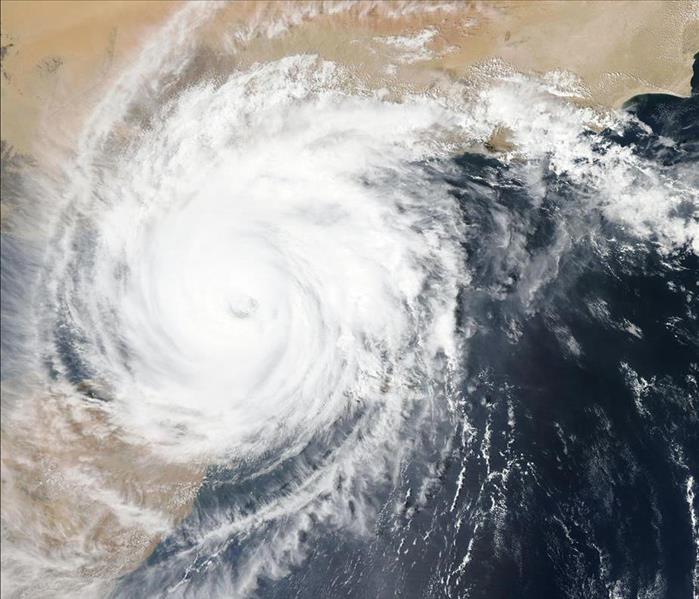 If a storm strikes while employees are in the building, it is important that there is an emergency plan specific to your business that they can follow
If a storm strikes while employees are in the building, it is important that there is an emergency plan specific to your business that they can follow
As we near the end of July, we find ourselves almost two months into hurricane season in the United States, as it spans from June 1st to November 30th. It’s important to note that here on the east coast, August through October is usually the height of hurricane season. This year, we may be in store for a 50% more severe hurricane season than usual, according to a study recently published by Colorado State University. Hurricanes pose a significant threat to commercial business and small businesses in particular. So, as we approach the beginning of August, it’s critical that commercial businesses prepare and take action in order to prevent devastating hurricane damage.
Take Action Before The Storm
Many businesses have essential documents that house important information. During a hurricane, such documents have an increased risk of becoming damaged or destroyed. Keeping important documents in waterproof storage containers and making copies to keep off-site are two ways in which you can best protect essential information. Additionally, in an emergency, it is important to be able to contact employees. Because many employees may be working remotely instead of where they would normally be working, make sure that your business has updated contact information to reach them and confirm their safety during an emergency. To protect your business’ property, it may be beneficial to have your roof inspected for underlying damage so that if there are any issues, they can be resolved prior to the storm’s arrival. Additionally, purchasing storm shutters and sandbags can be useful in preventing damage from flying debris and flooding.
Have A Plan In Place
If a storm strikes while employees are in the building, it is important that there is an emergency plan specific to your business that they can follow. Put together a plan that indicates which stairwells and exits employees should use and make sure that the employees familiarize themselves with the plan. Posting copies of the plan with visuals around the building to serve as reminders can be incredibly helpful guidance during an emergency.
SERVPRO Is Here To Help
Taking these precautions can increase your business’ level of hurricane preparedness and decrease the probability of undergoing extensive storm damage, but can still bring unexpected devastation. This hurricane season, if your business succumbs to unforeseen damage due to a hurricane, look no further than SERVPRO. Our team of disaster recovery and storm damage experts are highly trained and ready to help your business return to its pre-storm condition as soon as possible.
Flash Floods: Know Your Risk
6/24/2020 (Permalink)
 In order to protect your home, it is of the utmost importance that you know the risk of flash flooding in your area.
In order to protect your home, it is of the utmost importance that you know the risk of flash flooding in your area.
In just minutes, summer rain showers can become dangerous. In flash floods, water builds rapidly, pathing a path of destruction in its wake, demolishing bridges, buildings, and homes. While it can occur at any time during the year, flash flooding is common during the summer due to the higher humidity and slower jet stream. In the United States, flooding is the second deadliest weather-related event and claims an average of 81 lives per year according to NOAA. In comparison with general flooding, flash flooding can be more dangerous, as it contains the same intense force of flood water, but develops and moves quickly. In order to protect your home from the dangers of flash flooding, it is highly beneficial to understand its origins.
Causes of Flash Flooding
The jet stream, which greatly affects weather patterns throughout the year, slows during the summer season. Subsequently, summer storms have a tendency to linger over one area for a long time, which leads to a large amount of rain falling over one area. This heavy rainfall can increase the likelihood of a flash flood developing. Overall, flash flooding requires two conditions, long duration and high intensity of rainfall. These conditions are met in several storm scenarios, such as severe storms (hurricanes or tropical storms) and slow-moving thunderstorms. Another element that affects flash flooding is topography, or the physical features of an area. The risk of flash flooding is higher in areas located in close proximity to rivers, streams, and other bodies of water. Though it may come as a surprise, urban areas are also prone to flooding and flash floods due to the prominence of concrete and subsequent lack of soil into which rainwater can be absorbed.
Know Your Risk
Oftentimes, early warning cannot be given when it comes to flash floods because they develop so quickly. The lack of sufficient warning can increase the chances of your home undergoing water damage or even structural damage as a result of flash flooding. In order to protect your home, it is of the utmost importance that you know the risk of flash flooding in your area. Be sure to stay alert when storms are in the forecast and put together an emergency flood kit if you live in an area that is at an increased risk. However, if a flash flood catches you by surprise and wreaks havoc on your home, know that SERVPRO has you covered.
Wha do Waffles Have to do With FEMA?
4/6/2020 (Permalink)
A storm roared through the East Coast many years ago, in 2004. FEMA went to work, doing what they could to assess the damage and to help the disaster-stricken communities. Around the same time, out of this slew of hurricanes would grow an informal measure which would confuse civilians for years to come. The Waffle House Index. What is The Waffle House List exactly? What does delicious fluffy syrup-ey goodness have to do with Emergency Management?
Well, a researcher working for FEMA at the time found that by examining the actual operating state of Waffle Houses in the affected area one could potentially measure how serious a natural disaster was to the communities in the surrounding areas. When the store is open, green light, if the store is running on a small menu, yellow light, and if the store is shut down entirely, red light. Those were the key measurements. Although the theory may have seemed strange, it turned out that FEMA could get a fairly good idea of the extent of the situation in a certain area. It began as a sort of joke until FEMA administrator Craig Fugate coined the word in May 2011 (https:/n.pr/2JznNEc).
Now, with the current epidemic, The Waffle House Index is being put to the test again but now on a nationwide scale. If we can take anything from this story, its that being able to support your community in its time of need is the most important thing one can do. Whether that's staying inside at all times, or gearing up and going out to help the good of mankind. Good risk management is one thing, but understanding how to prepare for any size disaster, and being able to hold the foundation of our communities because of our preparedness is a trait that we hold pride on as well. SERVPRO Disaster Recovery Team-Team Wall, chooses to be that foundation for our community every day we put our boots on the ground. We are here to help. We are here to commit. We are here to serve.
If you would like to learn more about this topic, why not start at the Wikipedia page? If you're feeling so kind, they are in need of donations in order to stay running. All donations are appreciated.
Three Ways to Prevent Wind Damage Due to Spring Storms
3/16/2020 (Permalink)
Booming thunder and howling winds that rattle your home are characteristics of severe storms, which are becoming more prevalent as we turn the corner into spring. Strong wind, in particular, can cause damage to homes by breaking shingles and sending tree branches flying. Wind strength varies from storm to storm, ranging from calm wind with speeds below 1 mph to hurricane-force when the strength exceeds 73 mph. FEMA states that doors, roofs, windows, and garages are the most vulnerable areas of the home. If any of these four areas become damaged during a storm, the structure of your home may also be negatively impacted, which may require major repairs. To make sure that your home is protected from wind damage before a severe storm even appears in the forecast this spring, consider the following three tips:
Maintain Landscape and Trees
Strong winds can wreak havoc on the area surrounding your home, resulting in fallen trees and broken tree branches, which can prove to be dangerous to your home if the trees are located close to your home. Be sure not to over-water trees because doing so can weaken the root systems of trees, decreasing their ability to withstand the overwhelming force of strong winds. Finally, be mindful of outdoor objects and equipment, such as outdoor furniture, grills, or sports equipment, as these objects can be moved or manipulated by strong winds, which can risk damage to your home. During storms with strong wind, keep such items either stored in a safe structure, such as a shed, or anchored to the ground if they must remain outside.
Inspect the Roof
Damage to our roofs often goes unnoticed unless it creates a major problem because we cannot see it Therefore, it is important for roofs to be surveyed at least twice per year, during the summer and winter, in order to identify any damage and make sure that it is repaired. When surveying the roof, be on the lookout for loose or missing shingles and water damage in the attic. Hiring a roofing professional may be beneficial in this sense, as he or she may be able to spot hidden damage due to their experience, which could save your roof from devastation in the event of a storm occurring with strong wind. When it comes time to replace your roof shingles, consider choosing weather-resistant shingles that would be able to further protect your roof from wind damage.
Reinforce Windows and Doors
During storms with strong wind, different types of debris, such as tree branches or other outdoor objects, can pound against your home’s windows and doors. In combination with the power of strong wind gusts, these objects can inflict serious damage on vulnerable areas of your home, including doors and windows. To limit the extent of the damage to these areas, install storm shutters as a protective barrier between debris and the window or door. Storm shutters can either be purchased or makeshift storm shutters can be created with plywood. Garage doors are also a vulnerable area of the home during strong wind, so it may also be beneficial to purchase a garage door bracing kit in order to protect your garage door during severe wind and weather.
Preventing Basement Floods Due to Snowmelt
2/13/2020 (Permalink)
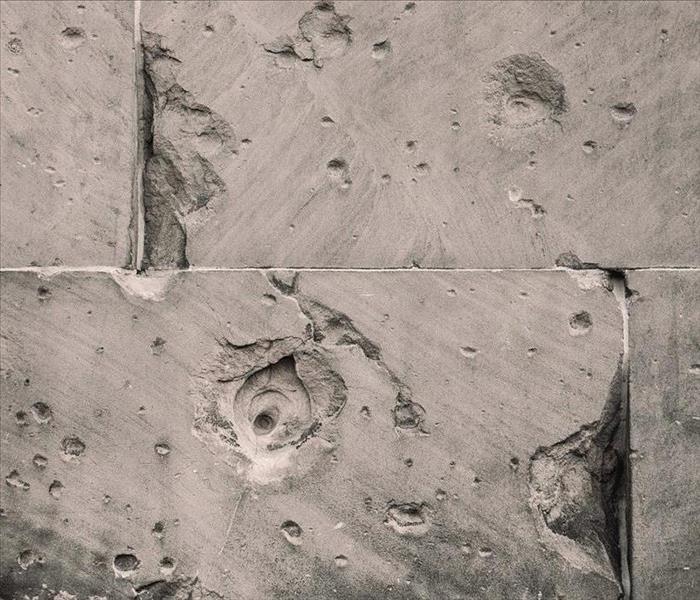 SERVPRO of Metro Pittsburgh East is always ready to tackle a new water loss in order to protect your property from further damage.
SERVPRO of Metro Pittsburgh East is always ready to tackle a new water loss in order to protect your property from further damage.
During rainy seasons, we often brace ourselves for basement flooding. However, did you know that basements can flood at any time of the year if moisture is present in the ground? Regardless of whether your basement has never flooded before or has flooded many times, all basements have the potential to flood, as they are commonly located below ground level. When moisture is present in the ground surrounding the basement, water can seep through basement walls. This moisture can result from rain, but during the winter season, the snow, ice, and other frozen precipitation that accumulates during snowstorms heavily saturate the ground upon melting, which increases the likelihood of basement flooding. This winter and spring season, protect your basement from flooding due to snowmelt by considering the following tips:
Remove Snow
Snow or ice that accumulate close to the perimeter of the home after significant snowfall can increase the likelihood of snowmelt seeping into basement walls after being absorbed into the ground. In order to decrease the chance of your basement flooding due to this occurrence, it is important to shovel a five-foot barrier between the snow and your basement. In addition, snow on roofs and overhangs should also be removed, as it can also accumulate around the perimeter of the home, which can contribute to basement flooding upon melting.
Fix Cracks in Foundation
Water can enter basements and cause flooding if there are cracks present in the basement’s walls or foundation. Water damage to objects such as nearby furniture, walls, and carpets often results from this, in addition to mold growth. The only way to decrease the risk of such damage is to repair cracks in order to prevent water from seeping into the basement. Filling cracks with epoxy can serve as a temporary solution, but professional assistance is usually needed for long-term repair. Basement walls and foundations that are free from cracks will significantly decrease the chances of your basement suffering from flooding as a result of snowmelt.
If Your Basement Floods…
Although one can take every preventative measure possible, there is always the possibility of an unexpected disaster. If your basement floods as a result of snowmelt, water must be immediately removed in order to minimize water damage, which can be achieved through the use of a wet vacuum and dehumidifiers. However, if the flood damage is overwhelming, professional assistance may be required. Calling SERVPRO of Metro Pittsburgh East ensures that your basement will be restored quickly and thoroughly after flooding due to snowmelt, minimizing any further water damage that may result from the flooding.
Flooding In Iowa
2/10/2020 (Permalink)
 Be wary of all storms. Keep up to date with your local weather and call SERVPRO if you suspect your building might be at risk to set up an ERP.
Be wary of all storms. Keep up to date with your local weather and call SERVPRO if you suspect your building might be at risk to set up an ERP.
Flooding in Iowa
13 inches of rain hit Burlington, Iowa by storm this May over a 2 day period, leaving the city flooded and in need of remediation. In addition to the rain, large hail, high winds, and tornadoes hammered the area, which resulted in flooding that swept through the city as well as the flooding of nearby rivers, such as the Missouri River. During February of this year, a remarkable 25 inches of snow blanketed Des Moines, Iowa. The melting of all that snow left the ground completely saturated with liquid, unable to hold any more water. Therefore, the 13 inches of rain spread across the ground just as it would across a cement or tile floor, flooding highways, roads, and homes in its path. SERVPRO received around 30 job files and three crews were sent to Iowa to restore what was damaged in the flood.
Flooding can result in the contamination and damage of drywall, support beams, and even the foundation of homes. The damage to homes ranged anywhere from wet finished basements of 500 square ft to 3,000 square ft to wet flooring, walls, and content. Mold is most likely to grow in the initial 24 hours of the flooding, which calls for swift action from restoration crews.
The most satisfying component of restoring flooded homes was the crews’ ability to help flood victims bounce back in addition to the gratifying feeling that emerged as a result of helping those affected by the floods.
In The Know: Ice Dams
1/20/2020 (Permalink)
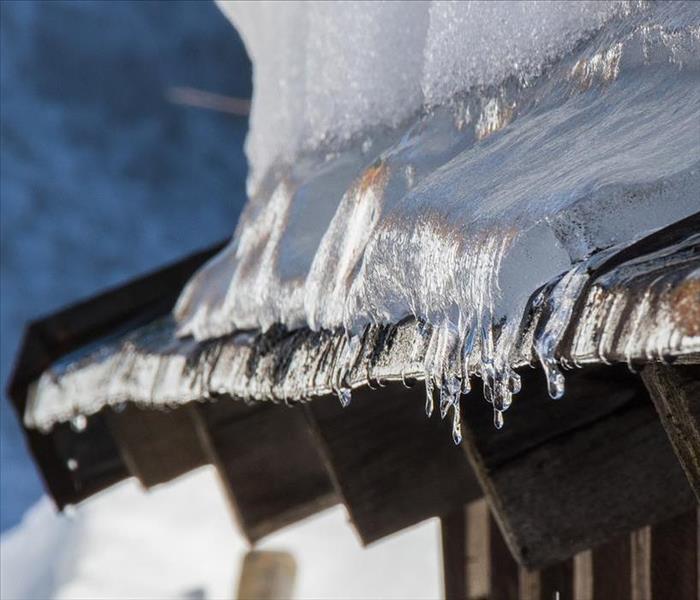 Always be wary of possible build-up on ice on your roof.
Always be wary of possible build-up on ice on your roof.
Many local areas have recently seen their first significant snowfall, indicating that we’re in store for more winter weather in the coming months. Alongside significant snowfall comes the possibility for winter weather to wreak havoc on your home or business. One of the most dangerous types of winter storm damage is ice dams. Ice dams are ridges of ice that form on below-freezing sections of a roof that prevent melted snow from draining off of the roof. When the melted snow cannot escape the roof, it will pile up behind the block of ice. This liquid can then leak down into attics, insulation, ceilings, and other walls within the building through cracks, risking serious damage.
Causes, Effects, and Prevention
After a significant snowfall, ice dams form due to roof temperatures that are not uniform. One factor that contributes to uneven roof temperatures is heat loss from the building. Without proper insulation, warm air from inside of the building can heat areas of the roof, causing snow to melt and contribute to ice dams. When the melted snow that sits behind the block of ice leaks down into the building, mold and mildew can grow on ceilings, walls, and other structures of the building, risking structural damage.
https://www.youtube.com/watch?v=5AGU5wDO0cw
In this video, the formation of ice dams is demonstrated on a model roof, providing a visual explanation of the information above. The video also explains various techniques, both short-term and long-term, that homeowners or business owners can use in order to treat an ice dam. One short-term solution shown in the video is filling a sock with rock salt and throwing it up onto the roof in hopes of breaking up the ice. A long-term solution shown in the video is adding additional insulation in your attic or having a professional spray foam underneath of the roof in order to keep warm air inside of the building.
To avoid the risk of mold growth, it is important to prevent any formation of ice dams on your roof this winter. Should an ice dam form on your roof, call SERVPRO in order to take care of the problem as quickly as possible and spare your home or business from any further damage.
Frozen Rain
11/20/2019 (Permalink)
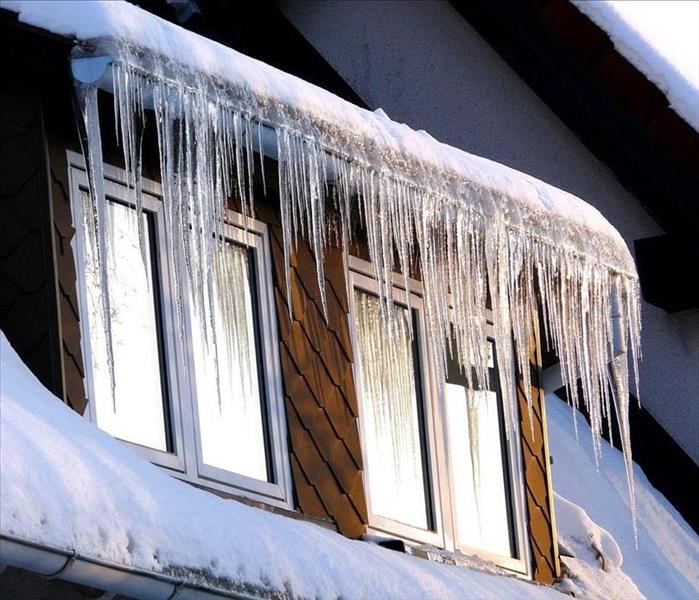 Icicles on a House
Icicles on a House
The Metro Pittsburgh East area has begun to see its first glimpses of snow and endure its first freezes of the season due to the recent colder temperatures. Along with colder temperatures in the air, ground temperatures are beginning to reach the freezing mark as well. When ground temperatures are cold but the atmosphere is still slightly too warm to produce snow, precipitation can fall as rain and instantly freeze upon impact with freezing ground temperatures on sidewalks, roads, or bridges. Freezing rain that creates ice on roadways can pose threats to the safety of drivers and pedestrians. The freezing rain can also form ice on trees and power lines, potentially damaging them in the process. Learning about the dangers of freezing rain and what to do in preparation for it can place you one step ahead when the forecast predicts freezing rain in your neighborhood.
Unlike snow, which can be shoveled, the ice formed by freezing rain cannot be eliminated quite as easily. Ice requires significantly more time and effort for removal. In addition, the ice resulting from freezing rain often deceives drivers and pedestrians, as ice often looks like water on a roadway or sidewalk. This can pose serious threats to drivers and pedestrians, as they may not be able to see the ice or receive adequate warning before driving in it. Aside from roadways and sidewalks, freezing rain can also impact surfaces such as tree branches and power lines. Ice can form on these surfaces. Enough ice can weigh down upon branches and power lines, potentially causing them to fall or break. Fallen branches and power lines can deprive local homes and businesses of power and heat for unpredictable amounts of time. Homes and businesses can also be at an increased risk of damage if heavy, icy branches fall nearby.
Taking precautions prior to a storm that is forecasted to produce freezing rain is a key step in ensuring your safety. The first of these precautions is purchasing salt, which can be sprinkled on outdoor surfaces such as sidewalks or driveways that will work to melt the ice faster. Another helpful practice may be to anticipate that branches may fall, damaged power lines may result in the loss of electricity, and the ice may deprive you of the ability to leave your home safely. Making sure that you purchase necessities, such as bottled water, toilet paper, batteries, flashlights, and blankets, before the storm will decrease the chances that you would need to leave your home while conditions are dangerous.
Safety Knowledge For Storm
7/9/2019 (Permalink)
The American Red Cross suggests everyone know what steps are necessary to stay safe if dangerous weather is predicted for your community. If you are to encounter any damage SERVPRO of Metro Pittsburgh is here to help.
Tornadoes can occur anywhere, at any time of the year or day. Safety steps you should take now to be ready if a tornado warning is issued for your neighborhood:
- Know your community’s warning system.
- Pick a safe room in your home where family members can gather if a tornado is headed your way. This should be a basement, storm cellar or interior room on the lowest floor with no windows.
- Prepare for strong winds by removing diseased and damaged limbs from trees.
- Move or secure lawn furniture, trashcans, hanging plants or anything else that can be picked up by the wind and become a projectile.
- Know the tornado danger signs: dark, often greenish clouds, a wall cloud, cloud of debris, large hail, a funnel cloud or a roaring noise.
Thunderstorms are most likely to happen in the spring and summer, during the afternoon and evening. However, similar to tornadoes, they can happen anywhere, at any hour of the day. Every thunderstorm produces lightning, which kills more people every year than tornadoes or hurricanes. Safety steps you can take if a thunderstorm is predicted for your area:
- If thunder roars, go indoors. If you can hear thunder, you are close enough to be in danger from lightning.
- Watch for storm signs like darkening skies, flashes of lightning or increasing winds.
- Postpone any outdoor activities. Many people who are struck by lightning are not where it is raining.
- Take shelter in a substantial building or a vehicle with the windows closed. Shutter windows and close outside doors securely. Stay away from windows.
- Do not take a bath, shower or use plumbing.
Flooding can occur due to heavy spring rains filling rivers and streams and snow melt. Flash floods occur suddenly when water rises rapidly along a stream or low-lying area. You should be prepared to evacuate at a moment’s notice and head for higher ground when a flood or flash flood warning is issued. Additional safety steps include:
- Stay away from floodwaters. If you come upon a flowing stream where water is above your ankles, stop, turn around and go another way. Six inches of swiftly moving water can sweep you off of your feet.
- If you come upon a flooded road while driving, turn around and go another way. If you are caught on a flooded road and waters are rising rapidly around you, get out of the car quickly and move to higher ground. Most cars can be swept away by less than two feet of moving water.
- Keep children out of the water. They are curious and often lack judgment about running water or contaminated water.
- Be especially cautious at night when it is harder to recognize flood danger.
Minimize Flood Damage by Preparing Your Building
12/23/2018 (Permalink)
Weather in Pennsylvania can change in an instant, and it only takes a small shift in a storm’s track to bring torrential downpours that could lead to devastating flooding. If you are a business owner, a flood can represent a serious threat to your company’s operations. While there is not a lot you can do to stop major floods from hurricanes and other natural disasters, here are some steps you can take to lessen the impact of storm and flood damage.
Build Barriers to Slow Water Incursion
Water is a powerful force, and it is virtually impossible to keep it at bay, but you can align barriers in the path to slow it down. You can start this process long before the onset of flooding by building a levee, berm or flood control wall if local building codes permit. Have a professional assess your lower floors to see if you should apply sealants to walls or relocate utility boxes. When the rain starts falling, you could enlist help to place sandbags in strategic areas around the structure:
- Across doorways, right up against the door.
- In front of garage doors.
- Around showers and floor drains to prevent incursion of water.
When building sandbag walls, make certain you do not completely surround your building, and use a plastic tarp as a base for extra waterproofing.
Clean Storm Drains and Gutters
In many cases, flood damage happens during normal storms because the building owner did not keep up on maintenance. Gutters, storm drains and other devices are designed to channel water away from the building, which is why it is important to clean them regularly to ensure they are free of debris that could cause a backup.
Minimize Losses, Being Prepared
Why risk significant disruptions to your operations when you could cut down on storm damage by taking some preparatory steps? Should you experience flooding despite your efforts, be sure to contact an experienced remediation company to get you back up and running as soon as possible.
Thunderstorms, Facts & Causes
12/18/2018 (Permalink)
Facts
Thunderstorms are defined as storms that produce thunder and lightning. Severe thunderstorms may also produce:
- Rain
- High winds
- Sleet or snow
It’s important to note that thunderstorms do not always produce moisture. A storm in which you see lightning and hear thunder, but never feel a drop of water is known as a “dry” thunderstorm. Thunderstorms that produce hail and tornadoes are known as “supercell” storms. Storms occur either in clusters or lines; therefore, they may present as a single thunderstorm or as multiple thunderstorms, hitting one after the other.
Causes
Thunderstorms are caused when moisture from the lower or mid-level part of the atmosphere mixes with warm, unstable air from the ground. Moisture and air then push upwards into the higher atmosphere to form clouds that produce thunder and lightning, as well as potential precipitation. The sun heats the ground and moisture is more perceptible in the air, especially in humid climates.
Thunderstorms must also be lifted to begin their formation. Some sources of lift include:
- More heat on the ground than in the air.
- Changes in atmospheric conditions near mountains.
- Weather front changes caused by clashing cold and hot air.
- Drylines, or when moist and dry air clash.
- Land or water breezes.
Any of these situations can immediately create a thunderstorm without warning, even in the middle of a clear blue day. In many cases, these storms will also be accompanied by lightning.
Minimize Flood Damage By Preparing Your Building?
12/18/2018 (Permalink)
Weather in Pennsylvania can change in an instant, and it only takes a small shift in a storm’s track to bring torrential downpours that could lead to devastating flooding. If you are a business owner, a flood can represent a serious threat to your company’s operations. While there is not a lot you can do to stop major floods from hurricanes and other natural disasters, here are some steps you can take to lessen the impact of storm and flood damage.
Build Barriers to Slow Water Incursion
Water is a powerful force, and it is virtually impossible to keep it at bay, but you can align barriers in the path to slow it down. You can start this process long before the onset of flooding by building a levee, berm or flood control wall if local building codes permit. Have a professional assess your lower floors to see if you should apply sealants to walls or relocate utility boxes. When the rain starts falling, you may want to enlist help to place sandbags in strategic areas around the structure:
- Across doorways, right up against the door.
- In front of garage doors.
- Around showers and floor drains to prevent incursion of water.
Clean Storm Drains and Gutters
In many cases, flood damage happens during normal storms because the building owner did not keep up on maintenance. Gutters, storm drains and other devices are designed to channel water away from the building. It iis important to clean and maintain your building regularly with help, to ensure no debris causes a backup.
Minimize Losses, Being Prepared
Do not risk significant disruptions to your operations when you could cut down on storm damage. Should you experience flooding, be sure to contact an experienced remediation company to get you back up and running.
Storm Facts, Tips and Safety
11/27/2018 (Permalink)
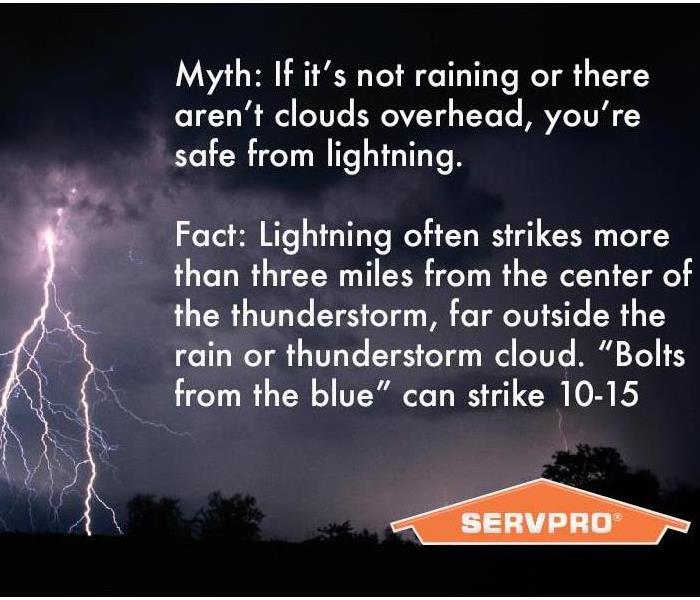 Lighting myth and fact.
Lighting myth and fact.
Thunderstorms are defined as storms that produce thunder and lightning. Severe thunderstorms may also produce:
- Rain
- High winds
- Sleet or snow
It’s important to note that thunderstorms do not always produce moisture. A storm in which you see lightning and hear thunder but never feel a drop of water is known as a “dry” thunderstorm. Thunderstorms that produce hail and tornadoes are known as “supercell” storms. Storms occur either in clusters or lines; therefore, they may present as a single thunderstorm or as multiple thunderstorms hitting one after the other.
Causes
Thunderstorms are caused when moisture from the lower or mid-level part of the atmosphere mixes with warm, unstable air from the ground. Moisture and air then push upwards into the higher atmosphere to form clouds that produce thunder and lightning, as well as potential precipitation. Spring, summer and fall are most conducive to thunderstorms because the sun heats the ground and moisture is more perceptible in the air, especially in humid climates.
Thunderstorms must also be lifted to begin their formation. Some sources of lift include:
- More heat on the ground than in the air
- Changes in atmospheric conditions near mountains
- Weather front changes caused by clashing cold and hot air
- Drylines, or when moist and dry air clash
- Land or sea breezes
Any of these situations can immediately create a thunderstorm without warning, even in the middle of a clear blue day. In many cases, these storms will also be accompanied by lightning. Most will not come with hail or tornadoes, unless they occur in tornado-prone states such as Kansas, Oklahoma, Texas and Missouri.
Severe Weather Facts & Myths
11/27/2018 (Permalink)
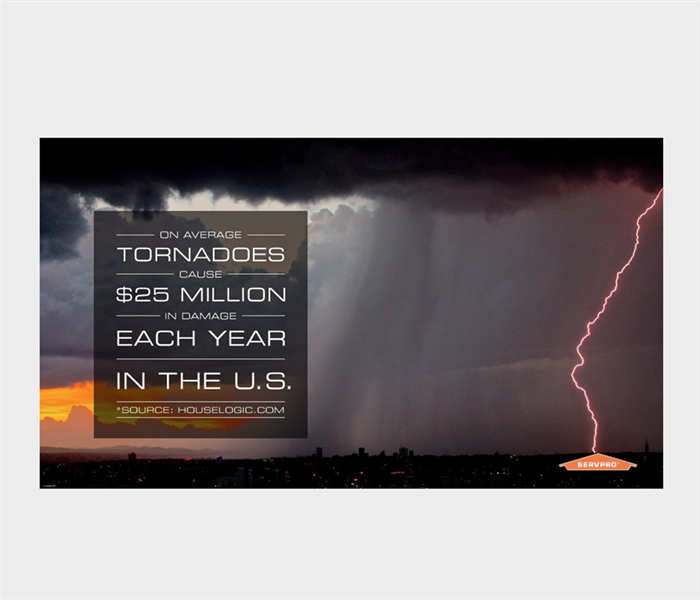 Tornadoes damage estimate.
Source: Houselogic.com.
Tornadoes damage estimate.
Source: Houselogic.com.
Thunder Storm
Myth: Highway and interstate overpasses are safe shelters against a tornado.
Fact: Overpasses can concentrate the tornado winds, causing them to be significantly stronger. This places the people under them in an even more dangerous situation. In recent years, several people seeking shelter beneath overpasses have been killed or severely injured. Being above ground level during a tornado is dangerous.
Myth: The low pressure with a tornado causes buildings to explode. Opening the windows will equalize the pressure, saving the building.
Fact: Opening the windows in an attempt to equalize pressure will have no effect. It is the violent winds and debris that cause most structural damage. It is more important for you to move to a safe area away from windows and exterior walls. With a tornado, every second counts, so use your time wisely and take cover.
Myth: Thunderstorms and tornadoes always move from west to east.
Fact: More often than not, thunderstorms move from west to east. Conditions in the atmosphere dictate how and where storms will move, and it can be in any direction. Tornadoes have been known to act erratic and can change directions and speed very quickly. Never try to outrun a tornado in a vehicle.
Myth: It’s not raining here, and skies above me are clear, therefore I am safe from lightning.
Fact: Lightning can strike many miles away from the thunderstorm. If storms are in your area, but skies happen to be clear above you, that certainly does not imply you are safe from lightning. Though these “Bolts from the Blue” are infrequent, lightning strikes 10 to 15 miles away from the storm are not out of the question.
Myth: Since I am inside my house and out of the storm, I am completely safe from lightning.
Fact: Just because you have taken shelter inside, you are not automatically safe. While inside waiting out a storm, avoid using the telephone or electrical appliances and do not take showers or baths. Also stay away from doors and windows. Telephone lines, cords, plumbing, even metal window and door frames are all lightning conductors and pose a threat
Myth: Large and heavy vehicles, such as SUVs and pickups, are safe to drive through flood waters.
Fact: It is a common belief that the larger the vehicle, the deeper the water it can drive through. Many people do not realize that two feet of water can float most vehicles, including SUVs and pickups. If the water is moving rapidly, vehicles can be swept away.
Myth: Flash floods only occur along flowing streams.
Storm Safety Knowledge
7/6/2018 (Permalink)
The American Red Cross suggests everyone know what steps are necessary to stay safe if dangerous weather is predicted for your community. If you are to encounter any damage SERVPRO is here to help.
Tornadoes can occur anywhere, at any time of the year or day. Safety steps you should take now to be ready if a tornado warning is issued for your neighborhood:
- Know your community’s warning system.
- Pick a safe room in your home where family members can gather if a tornado is headed your way. This should be a basement, storm cellar or interior room on the lowest floor with no windows.
- Prepare for strong winds by removing diseased and damaged limbs from trees.
- Move or secure lawn furniture, trashcans, hanging plants or anything else that can be picked up by the wind and become a projectile.
- Know the tornado danger signs: dark, often greenish clouds, a wall cloud, cloud of debris, large hail, a funnel cloud or a roaring noise.
Thunderstorms are most likely to happen in the spring and summer, during the afternoon and evening. However, similar to tornadoes, they can happen anywhere, at any hour of the day. Every thunderstorm produces lightning, which kills more people every year than tornadoes or hurricanes. Safety steps you can take if a thunderstorm is predicted for your area:
- If thunder roars, go indoors. If you can hear thunder, you are close enough to be in danger from lightning.
- Watch for storm signs like darkening skies, flashes of lightning or increasing winds.
- Postpone any outdoor activities. Many people who are struck by lightning are not where it is raining.
- Take shelter in a substantial building or a vehicle with the windows closed. Shutter windows and close outside doors securely. Stay away from windows.
- Do not take a bath, shower or use plumbing.
Flooding can occur due to heavy spring rains filling rivers and streams and snow melt. Flash floods occur suddenly when water rises rapidly along a stream or low-lying area. You should be prepared to evacuate at a moment’s notice and head for higher ground when a flood or flash flood warning is issued. Additional safety steps include:
- Stay away from floodwaters. If you come upon a flowing stream where water is above your ankles, stop, turn around and go another way. Six inches of swiftly moving water can sweep you off of your feet.
- If you come upon a flooded road while driving, turn around and go another way. If you are caught on a flooded road and waters are rising rapidly around you, get out of the car quickly and move to higher ground. Most cars can be swept away by less than two feet of moving water.
- Keep children out of the water. They are curious and often lack judgment about running water or contaminated water.
- Be especially cautious at night when it is harder to recognize flood danger.
Minimize Damage by Preparing Your Building
1/2/2018 (Permalink)
Weather in Pennsylvania can change in an instant, and it only takes a small shift in a storm’s track to bring torrential downpours that could lead to devastating flooding. If you’re a business owner, a flood can represent a serious threat to your company’s operations. While there’s not a lot you can do to stop major floods from hurricanes and other natural disasters, here are some steps you can take to lessen the impact of storm and flood damage.
Build Barriers to Slow Water Incursion
Water is a powerful force, and it’s virtually impossible to keep it at bay, but you can throw barriers in its path to slow it down. You can start this process long before the onset of flooding by building a levee, berm or flood control wall if local building codes permit. Have a professional assess your lower floors to see if you should apply sealants to walls or relocate utility boxes. When the rain starts falling, you can also place sandbags in strategic areas around the structure:
Across doorways, right up against the door
In front of garage doors
Around showers and floor drains to prevent incursion by backed up “black water”
When building sandbag walls, make certain you don’t completely surround your building, and use a plastic tarp as a base for extra waterproofing.
Clean Storm Drains and Gutters
In many cases, flood damage happens during normal storms because the building owner didn’t keep up on maintenance. Gutters, storm drains and other devices are designed to channel water away from the building, which is why it’s important to clean them regularly to ensure they’re free from debris that could cause a backup.
Minimize Losses by Being Prepared
Why risk significant disruptions to your operations when you could cut down on storm damage by taking some preparatory steps? Should you experience flooding despite your efforts, be sure to contact an experienced remediation company immediately to get you back up and running as soon as possible.
Thunderstorms Facts & Causes
12/18/2017 (Permalink)
Severe Thunderstorm Facts
Thunderstorms are defined as storms that produce thunder and lightning. Severe thunderstorms may also produce:
- Rain
- High winds
- Sleet or snow
It’s important to note that thunderstorms do not always produce moisture. A storm in which you see lightning and hear thunder but never feel a drop of water is known as a “dry” thunderstorm. Thunderstorms that produce hail and tornadoes are known as “supercell” storms. Storms occur either in clusters or lines; therefore, they may present as a single thunderstorm or as multiple thunderstorms hitting one after the other.
Causes
Thunderstorms are caused when moisture from the lower or mid-level part of the atmosphere mixes with warm, unstable air from the ground. Moisture and air then push upwards into the higher atmosphere to form clouds that produce thunder and lightning, as well as potential precipitation. Spring, summer and fall are most conducive to thunderstorms because the sun heats the ground and moisture is more perceptible in the air, especially in humid climates.
Thunderstorms must also be lifted to begin their formation. Some sources of lift include:
- More heat on the ground than in the air
- Changes in atmospheric conditions near mountains
- Weather front changes caused by clashing cold and hot air
- Drylines, or when moist and dry air clash
- Land or sea breezes
Any of these situations can immediately create a thunderstorm without warning, even in the middle of a clear blue day. In many cases, these storms will also be accompanied by lightning. Most will not come with hail or tornadoes, unless they occur in tornado-prone states such as Kansas, Oklahoma, Texas and Missouri.
What To Expect From Storm Damage Restoration
12/18/2017 (Permalink)
 We have traveled to help other areas by car, truck and through flight because we understand the importance of helping others when we can.
We have traveled to help other areas by car, truck and through flight because we understand the importance of helping others when we can.
Storm damage, wind damage, ice damage and hail damage can wreak havoc in your home. When this happens, you may feel like all is lost. However, you will be surprised by how much can be saved through expert home restoration or storm remediation. Before you count your losses, give storm restoration a chance.
Home restoration services that can be sought after damage are: hail damage, river flooding, ice damage, wind damage, flood water damage and ice damage. It is best to have the contacts of experts on storm remediation.
Wind damage potentially causes extensive roof damage. This happens due to loose shingles or tiles. Wind damage can also cause moisture from ice dams or ice damming to penetrate the roof. This can lead to wood swelling. The outcome is a sagging ceiling and roof damage which needs extensive roof repair.
Ice dams or ice damming also pose a risk to the roof. A roof leak can develop into a crack. This has the potential to damage the structure. Ice damming also weighs down the roof due to the ice dam pools. Homeowners who live in areas prone to wind or winter damage should consider roofs with a higher slope to reduce possible roof damage. This will reduce the need for regular roof repairs and the possibility of a roof leak. A roof leak from ice damming or formation of ice dams should be repaired immediately. Putting off a roof repair means that the homeowner incurs more costs later.
Roof inspection before the harsh weather also minimizes the roof repair costs. Any broken or lose shingles should also be fixed. Storm restoration experts will advise you on the appropriate roof repairs to be done ahead of any harsh weather. They will also assess the roof leaks before they get worse.
When you ask for advice and get approval to the services of storm restoration experts for: flood water damage, storm damage, ice damage, hail damage, river flooding, wind damage, then experts are sent to your home immediately.
Restoration professionals will conduct an examination of the exterior and the interior of a home or office. They also will check the extent of the flood water and ground water levels. This helps them to come up with the home restoration plan based on the flooding, storm damage and ground water.
The teams work together after agreeing on where to start. Storm damage, hail damage, flood water damage, roof damage and ice damage all have different water restoration processes. It is not advised for home or business owners to attempt the storm restoration process without seeking professional storm remediation.
Winter damage is another common weather calamity. Winter damage leads to frozen pipes. The frozen pipes are not able to allow for the flow of water. It can take a process and an over estimation of work for the frozen pipes to unfreeze. It is best to call in the experts to deal with the frozen pipes. Applying heat on the frozen pipes can lead to damage and the pipes may need replacement. It is recommended to keep heat in the house at a steady level throughout the day in order to keep house pipes well heated.
Today, home restoration and storm restoration experts are fully equipped to handle flooding such as from rivers and other harsh weather elements. Enlisting services can help to save your valuables after a storm.
Flood Safety & CleanUp Tips
12/18/2017 (Permalink)
Make sure you are wearing the proper protective gear before heading into a flood damaged building. This includes boots, gloves and respirator gear.
You will want to check for electrical hazards and structural damage, check for common hazardous materials like lead paint, asbestos, which may lead for help from professional contractors like us here at SERVPRO of Metro Pittsburgh East.
Make sure that you take these following steps when dealing with a flood damaged building or home:
- Act quickly, the severity of damage to the building and contents escalates after 48-72 hours.
- Ventilate affected areas to prevent mold growth. It is important to keep the air moving, if you call the professionals we can set proper air movers to make sure we decrease chances of mold growth.
- Assess the damage to items and materials, whether it be all of your belongings or furniture we can make sure to pack out and inventory all of your personal items.
- Expose pockets of saturation
- Conduct a thorough cleaning
- Confirm drying before reconstruction
These are all based on IICRC standards, which is what we here at SERVPRO of Metro Pittsburgh East, follow.
Flood Damage to Your Home or Apartment
11/29/2017 (Permalink)
Our neighborhood is home to many inviting condos, townhouses, and apartment buildings. Multi-occupant housing presents some challenges to residents, including sharing of common areas, noise and activity with neighbors, and bad choices, or accidents, affecting those living in other units. When the mistake made by a nearby resident causes flooding in other of your tenants’ homes SERVPRO awaits to help you recover.
A third-floor tenant has a waterbed that leaked, causing flood damage throughout that wing of your South Hills apartment complex. Nearly 200 gallons of water soaks through all three levels, inconveniencing your renters, threatening structures, and ruining tenant belongings. Quick action by our restoration team saves you from relocating individuals or families as the restoration completes.
Our crew arrives with truck-mounted pumps and water extractors for speedy removal of the flooded contents of the mattress. Although we begin our investigation in the bedroom with the offending waterbed SERVPRO crew members are familiar with the “path of least resistance” water takes. Since some of the water drained down common walls and through ceilings, its path is hidden, following pipes and wiring behind the gypsum board and acoustical tiles. If necessary, we remove a few tiles or cautiously cut a hole into a wall when we fear water is pooling in unseen recesses.
After our team vacuums up visible and hidden water from carpeting and floors, air movers and dehumidifiers take on the next stage. SERVPRO technicians train in moisture measurement and monitoring, ensuring that carpeting, sub floors, and walls all receive individualized drying attention based on their difference drying curves. Carpet padding usually fails to dry fast or thoroughly enough, so we replace it in most cases. The carpeting itself dries in place, sometimes lifted and propped up, so the air moves over both the top and bottom for complete drying.
One supporting role SERVPRO provides in a disaster like this is to work with insurers. Your tenant did not sneak the waterbed into the unit. Since you knew it was in place, you demanded purchase by this lessee of additional renter’s insurance. Along with coverage, you keep up as the landlord the claims proven with our help against the extra insurance limits your liability.
Rely on SERVPRO of Metro Pittsburgh to react fast when flooding affects several units of your apartment house. Call (412) 672-5400 to arrange for a flood damage restoration team to come to your aid, 24/7.
Storm Damage? Call SERVPRO of Metro Pittsburgh
6/28/2017 (Permalink)
When Pittsburgh businesses suffer serious damage after storm events, SERVPRO of Metro Pittsburgh will work around the clock to clean up any debris and to restore the property to preloss conditions. We understand that commercial storm damage can be very costly in terms of productivity; that is why it is always our goal to get your business back up and running as quickly and as seamlessly as possible.
We Have the Resources to Handle Large Commercial Storm Damage
When a storm hits Allegheny County, we can scale our resources to handle large-loss commercial restoration projects. We have access to equipment and personnel from a network of over 1,600 Franchises across the country, as well as elite Disaster Recovery Teams that are strategically located throughout the United States.
If your business is ever damaged by severe floods or storms, call us right away at 412-825-5480. Disaster can strike when we least expect it, but SERVPRO of Metro Pittsburgh will be there to help you weather the storm.
Does Your Pittsburgh Property Contain Lead?
6/28/2017 (Permalink)
Older homes, older child care facilities, schools and other buildings are more likely to contain lead-based paint. Homes may be private, government-assisted or public housing. Schools are preschools and kindergarten classrooms. They may be urban, suburban or rural.
Percentage of homes likely to contain lead:
- Built between 1960-1978 = 24%
- Built between 1940-1960 = 69%
What can you do to protect your family from lead in pre-1978 homes?
- If you rent, notify your landlord of peeling or chipping paint.
- Clean up paint chips immediately.
- Regularly clean floors, window sills, and other surfaces. Use a mop, sponge, or paper towel with warm water and a general all-purpose cleaner or a cleaner made specifically for lead.
- Thoroughly rinse sponges and mop heads after cleaning dirty or dusty areas.
- Wash children’s hands, bottles, pacifiers and toys often.
- Keep children from chewing window sills or other painted surfaces.
- Clean or remove shoes before entering your home to avoid tracking in lead from soil.
SERVPRO of Metro Pittsburgh follows the EPA's strict guidelines for lead paint
The Environmental Protection Agency (EPA) requires firms performing renovation, repair, and painting projects that disturb lead-based paint in pre-1978 homes, child care facilities and schools be certified by the EPA. These firms also must use certified renovators who are trained by EPA-approved training providers to follow lead-safe work practices.
According to EPA requirements (40 CFR Part 745) contractors must use lead-safe work practices and follow these three simple procedures:
- Contain the work area.
- Minimize dust.
- Clean up thoroughly.
SERVPRO of Metro Pittsburgh technicians always take the necessary precautions according to current laws. Our technicians have been trained and certified to follow lead-safe work practices while performing renovation and repair projects in your area.
Severe Weather and the Toll it Takes on Your Home or Business
3/1/2017 (Permalink)
 Heavy Winds and Rain Can Cause a Major Toll on Your Home or Business. Call (412) 825- 5480 if you need immediate assistance from storm damage.
Heavy Winds and Rain Can Cause a Major Toll on Your Home or Business. Call (412) 825- 5480 if you need immediate assistance from storm damage.
Severe weather can take a toll on your home. It’s not unusual for storm damage to affect your home’s exterior, leading to serious problems in the aftermath of the weather. SERVPRO of South Hills provides 24-hour restoration services for weather-related damage to homes.
When a storm strikes, it’s important to be aware of the potential problems that can develop. You can’t control the weather, but you can control how you respond in the immediate aftermath. Here are three of the issues that could afflict your home after a storm hits:
- Roof Damage: Roofs are susceptible to damage during any major storm, from heavy winds and torrential rains to snowstorms. Moisture can weaken already vulnerable areas of the roof, and strong winds can knock down loose shingles or cause visible damage to them. You may notice a leak in your attic or ceiling if a storm damages your roof.
- Windows Are Vulnerable: A thoroughly sealed and weather-stripped window is unlikely to suffer severe storm damage, but old windows that haven’t been catered to recently could develop problems if it rains. For example, the moisture can seep into openings around the window, causing a leak inside the house. Rain can also cause wood to rot and mold to develop in the window’s vicinity. Rugs and carpets in the area could also be susceptible to water damage. Windows in the basement are extremely vulnerable if they aren’t protected, which leads to flooded basements and potentially damaged property.
- Gutters Can Become Clogged: Gutters aren’t immediately obvious problems because you have to inspect them to see if they’ve become clogged after the storm. Rain can wash all kinds of debris into them, and once they become congested, they no longer filter water away from your home. The result could be water damage to your property, and the gutters could also suffer damage later since the excess weight of debris can cause them to sag.
Storm damage affects more than just the trees around the house. It can also have an impact on your home’s foundation. After a major storm, take a close look at your home and investigate for problematic signs. If you discover anything, call the restoration service team at SERVPRO of South Hills at (412) 825-5480. They’ll manage the situation and restore your home back to normal.
SERVPRO Deploys Disaster Recovery Team
11/21/2016 (Permalink)
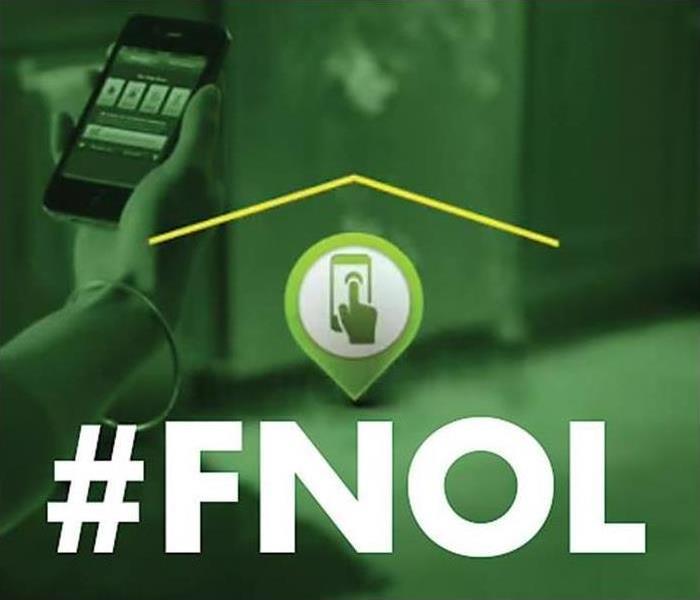 You can't stop a disaster from striking, but you can help minimize the damages.
You can't stop a disaster from striking, but you can help minimize the damages.
Below is a press release from mid-April 2016 from our corporate office regarding Houston flooding. It will give you an idea about how our organization responds to national disasters. SERVPRO Metro-Pitt is part of the national disaster response team.
Gallatin, Tennessee April 19, 2016 - Heavy rainfall continues to cause widespread flooding in and around the Houston area. With more rain in the forecast, additional flooding is expected. SERVPRO’s Disaster Recovery Team has been activated to assist residents and business owners in flood affected areas.
The days immediately following a flood event are critical to prevent secondary damages, like mold. SERVPRO suggests the following steps to help minimize additional damage to your property.
- If the water has entered the structure through the flooding of a creek, stream or river, or if it has filtered through insulation during its intrusion, it is considered to be black water and could be hazardous to your health. Avoid contact with contaminated items as much as possible.
- Take the greatest caution while entering your home, and wear sturdy shoes and protective clothing when dealing with flooded areas.
- Do not attempt to operate any electrical equipment while standing in wet or damp locations.
- Throw away all foods – even canned goods – that have come into contact with flood waters.
- Remove and prop wet upholstery and pillow cushions for drying. Wipe excess water from wood furniture after removal of lamps and tabletop items.
- Place fans at 45-degree angles to walls and move large furniture away from walls to create the best air circulation.
- If your home has a crawlspace, be aware excess moisture in this area can often foster mold growth.
The first 24 hours after a water damage or flood are so crucial to keeping final costs of the damage down,
said Don Turner, Director of SERVPRO’s Disaster Recovery Team. A lot of flood situations require professional equipment and knowledge of the science of drying to mitigate. By taking these steps, property owners can help minimize damage until the professionals arrive.
SERVPRO’s Disaster Recovery Team mobilizes from across the country, as needed, to support large storm events. SERVPRO’s Disaster Recovery Team has responded to large loss and storm events across the country, including: 2015 Siberian Express, 2014 Mid-Atlantic Flooding, 2014 Polar Vortex, 2013 Colorado Floods, 2013 Alberta, Canada Floods, 2012 Hurricane Sandy, 2012 Hurricane Isaac, 2011 Hurricane Irene and Tropical Storm Lee, 2011 North Dakota Floods, 2010 Tennessee Floods, 2010 New England Floods, 2009 California Wildfires and 2008 Hurricane Ike.
About SERVPRO
Founded in 1967, the SERVPRO Franchise System is a leader and provider of fire and water cleanup and restoration services, and mold mitigation and remediation. SERVPRO's professional services network of more than 1,700 individually owned and operated Franchises responds to property damage emergencies ranging from small individual disasters to multi-million dollar large-loss events. Providing coverage in the United States and Canada, the SERVPRO System has established relationships with major insurance companies and commercial clients, as well as individual homeowners.
2016 Hurricane Season Most Active Since 2012
5/22/2016 (Permalink)
SERVPRO STORM TEAM - Here to Help!
The 2016 Atlantic hurricane season is expected to be the most active since 2012, according to a forecast released Friday, May 20, 2016 by The Weather Company, an IBM Business.
A total of 14 named storms, eight hurricanes and three major hurricanes are forecast during the coming season.
This is greater than the 30-year historical average of 12 named storms, six hurricanes and three major hurricanes for the Atlantic basin. A major hurricane is one that is Category 3 or stronger on the Saffir-Simpson Hurricane Wind Scale.
The Weather Company's forecast also calls for a slightly higher number of named storms and hurricanes than an outlook issued earlier in April by Colorado State University (CSU) that is headed by Dr. Phil Klotzbach. That forecast said the Atlantic was expected to see 13 named storms, six hurricanes and two major hurricanes.
An important note about both outlooks is that the seasonal forecast numbers do include Hurricane Alex, a rare January hurricane that struck the Azores a few months back. Though the official hurricane season spans the months from June through November, occasionally we can see storms form outside those months.
Goodbye El Nino.. Hello La Nina
The strong El Niño we saw this winter continues to fade away and may transition to its counterpart La Niña by this fall. Of course, if this handoff from El Niño to La Niña conditions occurs, it could happen during the middle of the 2016 hurricane season.
Klotzbach said that the transition from El Niño to neutral or La Niña conditions during the 2016 hurricane season makes this particular April hurricane outlook very uncertain.
The transition could cause the early part of the hurricane season to be less active while the second half of the season may more active, according to The Weather Company's outlook.
 Strong storms, such as hurricanes, can form and make landfall in your area at any time during hurricane season, even as late as November.
Strong storms, such as hurricanes, can form and make landfall in your area at any time during hurricane season, even as late as November.





 24/7 Emergency Service
24/7 Emergency Service














